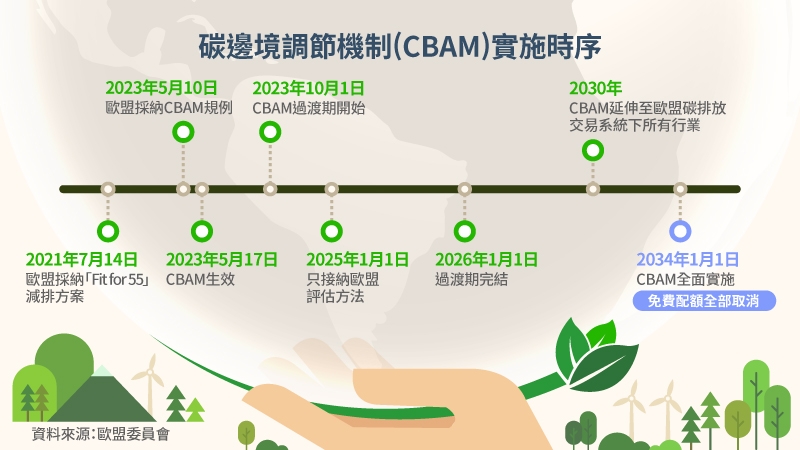
2025-10-19 19:33:23
Magical Fantasy Journey: Explore Infinite IP Licensing Opportunities with iGiftU at the 33rd Shenzhen Gift & Home Show 1078
2025-06-02 18:36:04
Netflix Release Schedule 2025: WEDNESDAY 3475
2025-05-02 13:19:22
The Enduring Magic of Harry Potter: Why the Wizarding World Captivates Generations 3529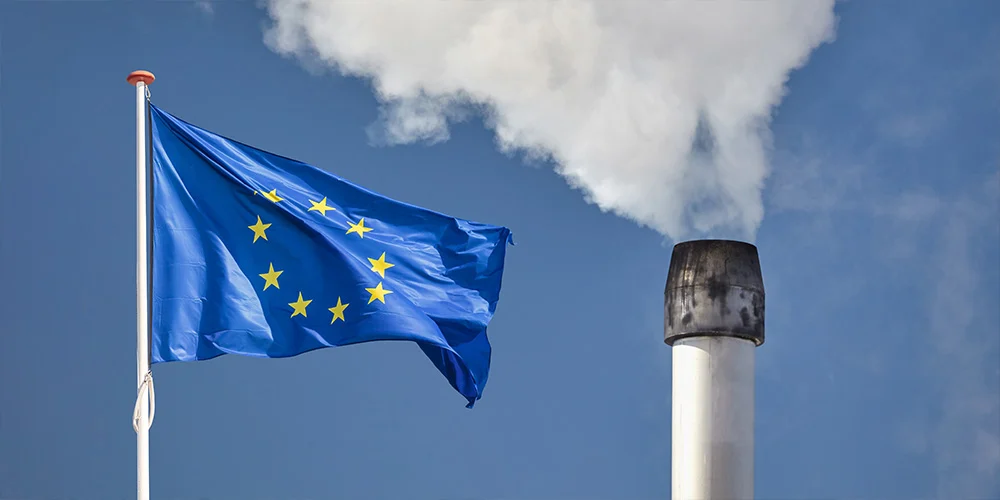
2024-10-09 12:38:22
Understanding the EU’s Carbon Border Adjustment Mechanism (CBAM) 5508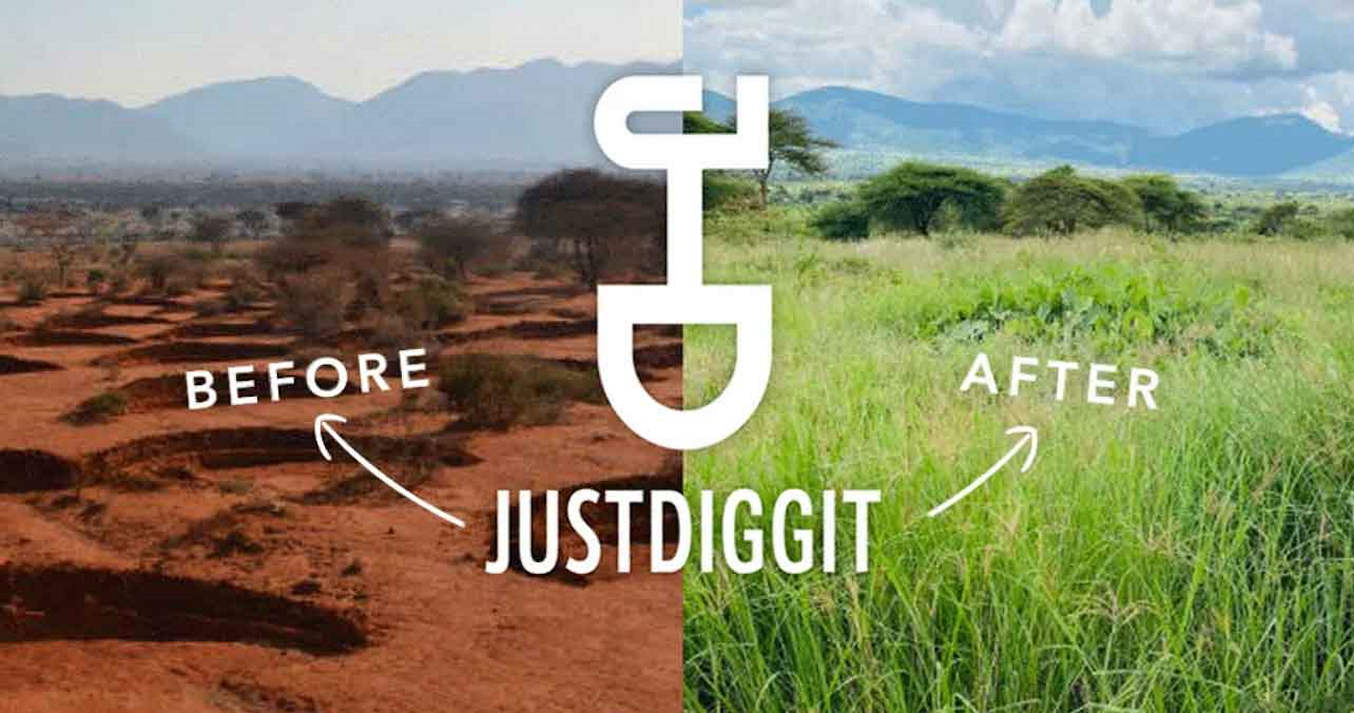
2024-10-08 14:09:38
Who is Justdiggit? 4913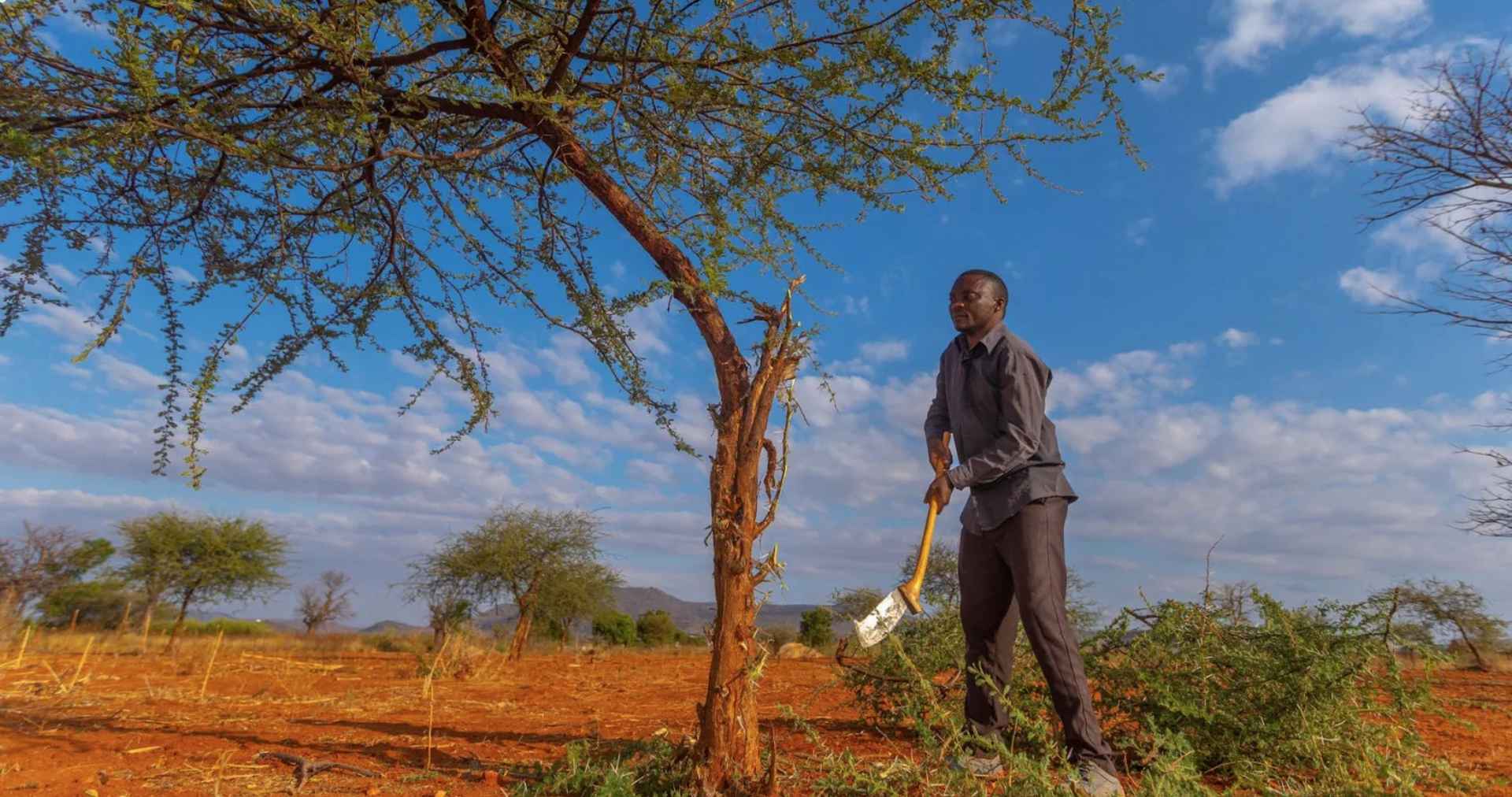
2024-08-18 12:03:33
Treecovery explained: What is this nature restoration technique and why is it so effective? 4527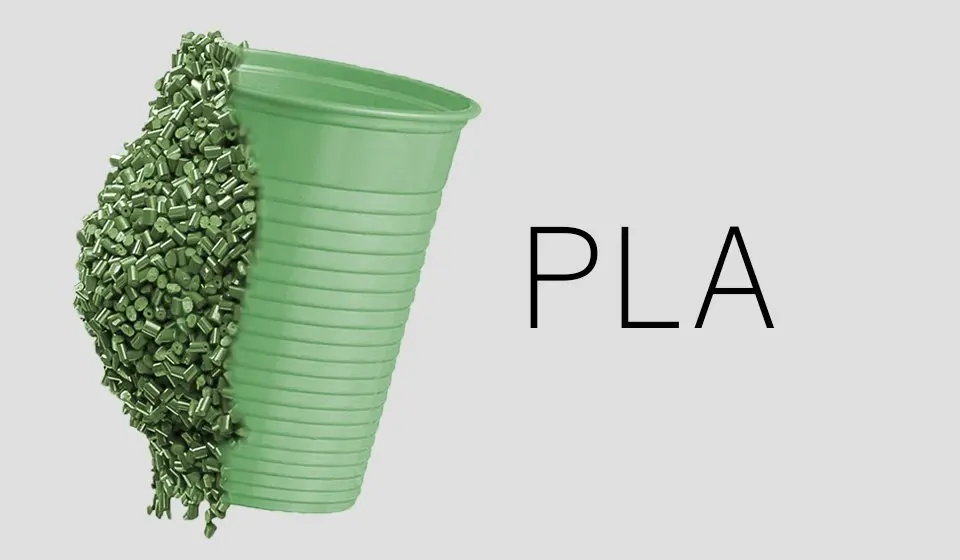
2024-07-17 08:15:18
The Eco-Friendly Advantages of PLA Plastic for Corporate Gifts 4909
2024-07-13 23:00:18
Understanding the Corporate Gifting Culture 4675
2024-07-03 17:46:13
Step into a world of imagination and create your own story with our custom Monopoly Green game! 19269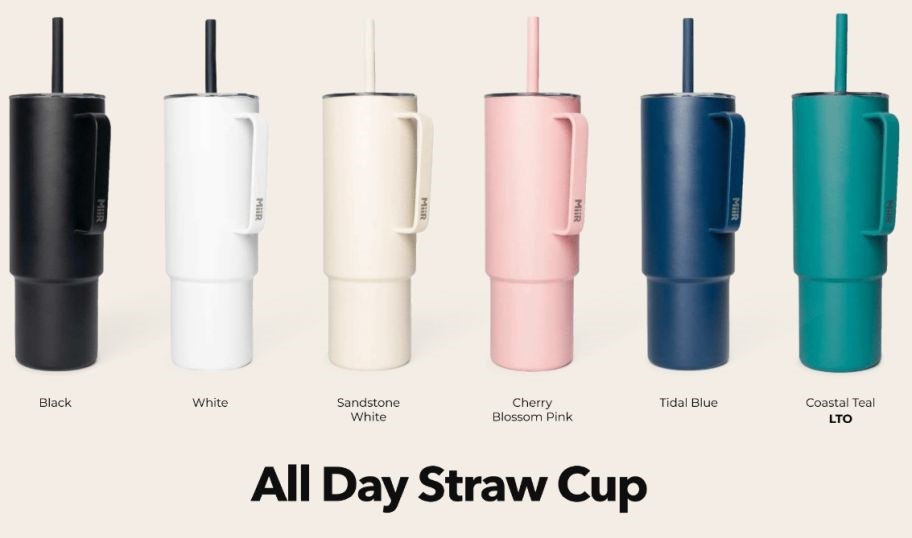
2024-06-19 15:14:23
MiiR All Day Straw Cup for your next event :the all-hours hydration companion 3120
2024-05-12 23:44:44
The Perfect Corporate Gift: Crossover Mahjong Sets Inspired by McDonald's and Hello Kitty Collaboration 4712
2024-05-03 10:52:27
The WPC Umbrella: The Prefect Blend of Style and Sun Protection 3872
2024-04-26 15:51:11
The Art of Corporate Gifting: Building Relationships through Thoughtful Gestures 4218
2024-04-05 13:55:30
Improving the daily lives of both guests and staff, by growing plants in the workspace: Guldsmeden Hotels 19836.png)
2024-04-03 18:45:41
What is Premium Corporate Gifting? 5822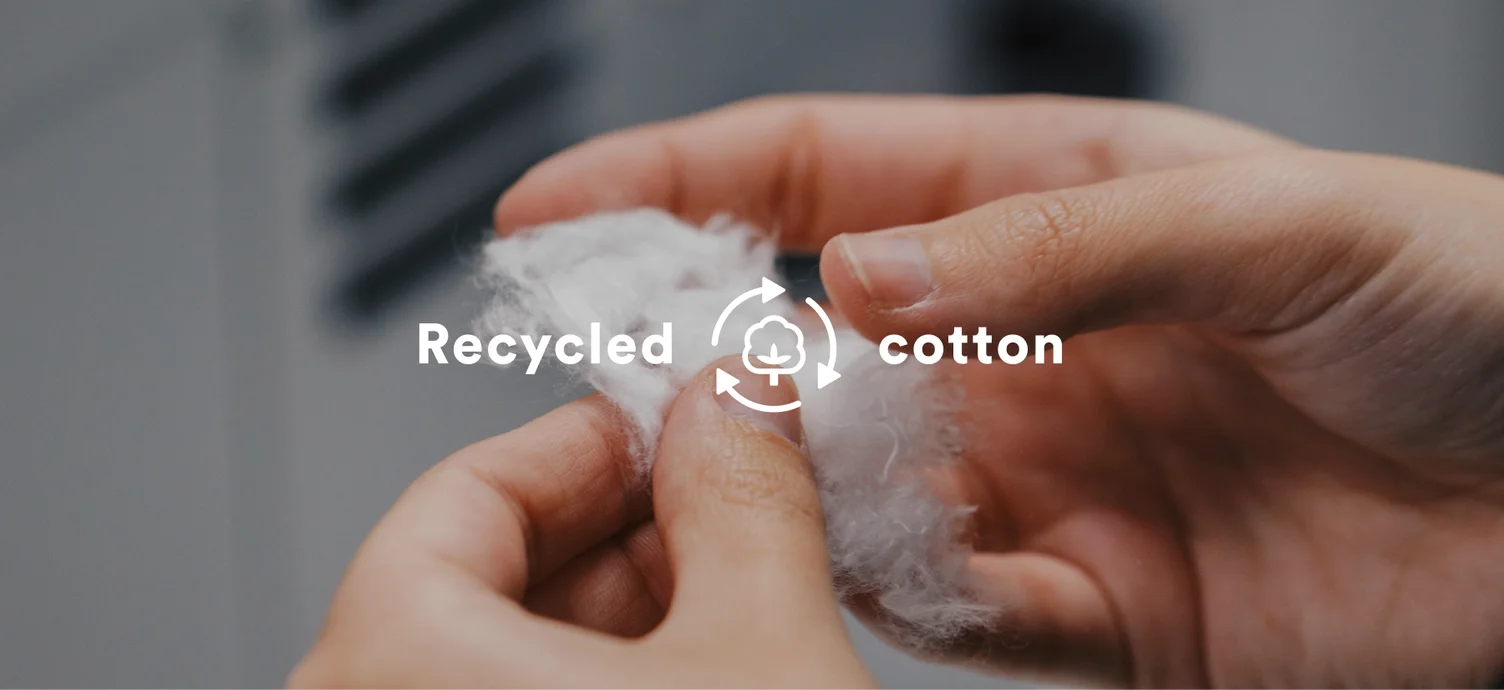
2024-04-03 18:05:43
Recycled Cotton 24899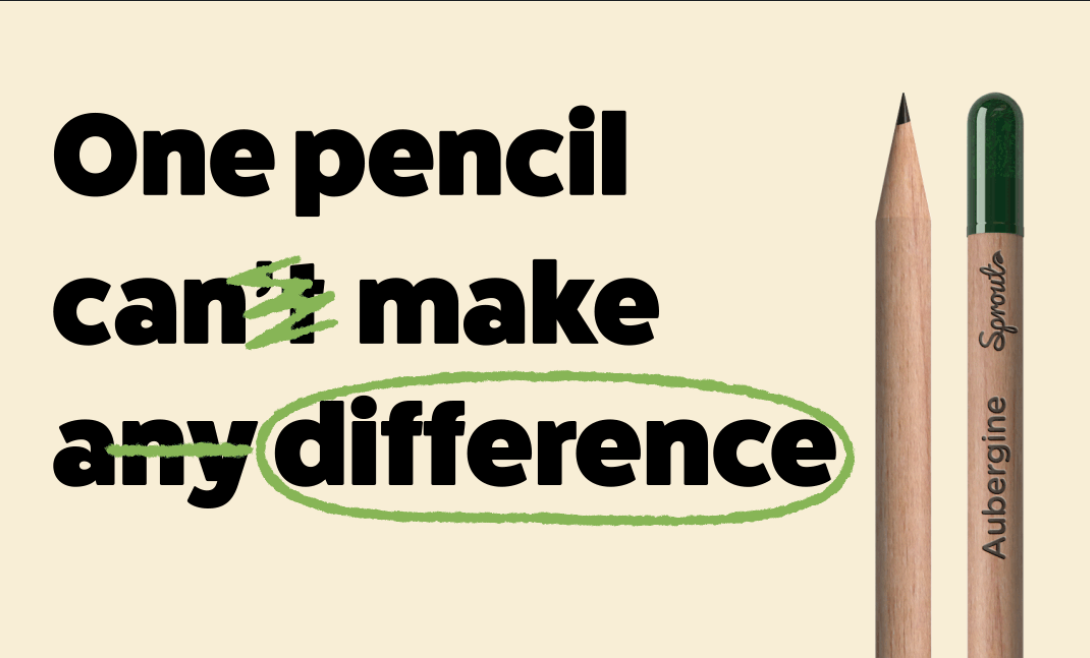
2024-04-03 17:18:03
The Growing Trend of Plantable Pencils: Writing with Sustainability in Mind 18095
2024-04-03 16:01:06
The Importance of Corporate Gifts: Strengthening Relationships and Building Brand Loyalty 5335
2024-04-02 18:51:14
What is RPET? 6055
2021-11-12 16:25:31
Utilizing Eco-Friendly Gifts at Corporate Events - Environmental, Social, and Corporate Governance 6641
2021-06-09 19:06:28
禮品訂制推薦哪些類別的禮品 7999
2021-06-09 17:26:45
創新的環保可種植禮品!可讓客戶對您的品牌更印象深刻! 8322
2025-10-19 19:33:23
Magical Fantasy Journey: Explore Infinite IP Licensing Opportunities with iGiftU at the 33rd Shenzhen Gift & Home ShowAs the warm sun of October approaches, the doors to the magical world are about to open! Meiyu, a professional expert in gift customization and IP licensing, will showcase a range of popular IP-licensed products at the 33rd Shenzhen Gift & Home Show! This is an event filled with creativity, magic, and surprises. Under the theme of "Magical Exploration Exhibition," we invite you to step into a fantastical world and explore limitless IP licensing opportunities and personalized gift solutions.
Exhibition Highlights
Thematic Magic, IP Gathering: Our booth centers on magic and exploration, featuring globally recognized IP-licensed products from Netflix's hit series "Squid Game," the classic fairy tale "The Little Prince," and the magical saga "Harry Potter." From adorable character keychains to exciting blind box gifts (containing randomly selected exquisite character figures that offer the joy of mysterious collections upon opening), there’s something for everyone! Whether you are a corporate buyer or a personal collector, you will find your desired items.
Personalized Customization, Endless Creativity: We offer a variety of personalized gift solutions, including delightful blind box gifts that combine new IP licensing opportunities in the Greater Bay Area, helping businesses enhance brand influence and achieve gift marketing upgrades!
Interactive Experience, Continuous Surprises: The event will feature character merchandise displays and surprise gift activities. Come explore the secrets of Planet B612 or wave your wand to feel the charm of Harry Potter.
Exhibition Details
Date:
- October 20-22, 2025: 09:00 - 18:00
- October 23, 2025: 09:00 - 17:00
Location:
- Shenzhen International Convention and Exhibition Center (Baoan District)
Booth Number:
- 13D66
As a leader in the Greater Bay Area gift industry, Meiyu is committed to gift toys, cultural and creative licensing, IP licensing, and customized gift supply for chain enterprises. We collaborate with international partners such as Cinereplicas and Netflix to provide a one-stop service from design to global logistics. Whether you are seeking IP licensing collaboration or customized corporate gifts, this is your ideal destination!
How to Participate? Scan to Claim!
Get your ticket + thank-you gift by scanning the QR code! (Limited time until October 18, 20:00) Scan the QR code below to quickly obtain free tickets and meal vouchers. Don’t miss the chance to explore the magical world!
魔法奇幻之旅:邀您共探無限IP授權新機遇——iGiftU第33屆深圳禮品家居展觀展邀請
隨著十月的暖陽漸濃,魔法世界的大門即將開啟!美裕作為專業的禮品定制及IP授權專家,將攜眾多熱門IP授權產品,盛裝亮相第33屆深圳禮品家居展!這是一個融合創意、魔法與驚喜的盛會,我們以“魔法探索展”為主題,帶您走進奇幻世界,探索無限的IP授權機遇與個性化禮品解決方案。
展會亮點
主題魔法,IP雲集:本次展位以魔法與探索為核心,匯集了Netflix熱門劇集《鱿魚遊戲》、經典童話《小王子》、魔法傳奇《哈利·波特》等全球知名IP授權產品。從可愛Q萌的角色掛飾,到令人驚喜的盲盒禮品(內含隨機精美角色造型,開啟即享神秘收藏樂趣),應有盡有!無論您是企業採購還是個人收藏,都能找到心儀之作。
個性化定制,創意無限:我們提供多種個人化禮品解決方案,包括令人驚喜的盲盒禮品,結合大灣區IP授權新機遇,幫助企業提升品牌影響力,實現禮品營銷升級!
互動體驗,驚喜不斷:現場將有角色周邊展示、驚喜禮物等活動,等您來探索B612星球的秘密,或是揮舞魔杖感受哈利波特的魅力。
展會詳情
時間:
- 2025年10月20日 - 22日 09:00-18:00
- 2025年10月23日 09:00-17:00
地點:
- 深圳國際會展中心(寶安區)
展位號:
- 13D66
作為大灣區禮品行業的領先者,美裕致力於禮品玩具文創授權、IP授權、連鎖企業定制禮品供應。我們與Cinereplicas、Netflix等國際夥伴合作,提供從設計到全球物流的一站式服務。無論您是尋求IP授權合作,還是定制企業禮品,這裡都是您的不二之選!
如何參與?掃碼即領!
門票 + 謝禮 扫碼即領!(限時至10月18日20:00止)掃描下方二維碼,快速獲取免費門票及餐券。別錯過這個探索魔法世界的機會哦!

2025-06-02 18:36:04
Netflix Release Schedule 2025: WEDNESDAYWe’re now over a quarter of the way through 2025! Welcome back to your bumper guide to all the new movies and series scheduled to arrive on Netflix throughout the rest of the year. It’s headlined by mammoth returning series like Stranger Things, Wednesday, and Squid Game, along with movie highlights like Havoc, Frankenstein, and Knives Out 3.
Wednesday
Wednesday is a fantasy horror-comedy series produced by Netflix, focusing on the iconic character Wednesday Addams from the Addams Family. Directed by Tim Burton and starring Jenna Ortega, the show follows Wednesday's adventures at her new school, Nevermore Academy.
Story Background
The series revolves around Wednesday's coming-of-age journey as she navigates her life at school, interacts with her peers, and uncovers supernatural mysteries surrounding her. Not only does she face typical teenage challenges, but she also delves into the exploration of her own identity and abilities.
Key Features
Unique Characterization: Wednesday is portrayed as a smart, witty, and slightly gloomy girl, whose distinct personality resonates with a wide audience.
Dark Humor: The show blends dark humor with suspenseful elements, creating a unique viewing experience that is both entertaining and engaging.
Visual Style: Known for its gothic aesthetic, the series features stunning visuals and elaborate set designs, immersing viewers in the fantastical world of the Addams family.
Profound Themes: Beyond entertainment, the series explores deep themes such as identity, friendship, and family dynamics, appealing to viewers of all ages.
Reasons for Popularity
Since its release, Wednesday has garnered immense popularity due to its unique storytelling, captivating characters, and striking visuals, quickly becoming a cultural phenomenon. Audiences are drawn not only to Wednesday's character but also to the anticipation of her thrilling adventures.
With its blend of humor and depth, as well as Wednesday's growth story, the series has received widespread acclaim and amassed a dedicated fanbase.
Join the Wednesday Craze
Now is the perfect time to embrace the excitement surrounding Wednesday. Check out our exclusive collection of Wednesday-themed merchandise to celebrate your fandom. Whether you’re treating yourself or shopping for a fellow fan, our products are a fantastic way to show your love for this beloved series.
As we look forward to an exciting year of entertainment on Netflix, make sure to keep an eye out for Wednesday and the amazing merchandise that comes with it!

2025-05-02 13:19:22
The Enduring Magic of Harry Potter: Why the Wizarding World Captivates GenerationsThe Harry Potter phenomenon is more than just a successful book series and film franchise - it's a cultural touchstone that has shaped an entire generation. At iGiftU, we understand the powerful connection fans have with this magical universe, which is why we're proud to offer authentic Harry Potter licensed merchandise that lets you own a piece of this extraordinary legacy.
The Secret Behind Harry Potter's Global Appeal
A Story That Grew With Its Audience
What began as a children's book evolved into a sophisticated narrative that matured alongside its readers. The series' depth - from lighthearted school adventures to darker themes of love, sacrifice, and mortality - creates a rare storytelling continuum that resonates across age groups.
A Fully Realized Magical World
J.K. Rowling didn't just create characters; she built an entire universe with its own rules, history, and mythology. From Quidditch to Butterbeer, the wizarding world feels tangible and lived-in, inviting fans to imagine themselves as part of the story.
Timeless Themes of Friendship and Courage
At its heart, Harry Potter celebrates universal values - the power of friendship (Harry, Ron, and Hermione's unbreakable bond), the importance of standing up for what's right, and the idea that our choices define us more than our circumstances.
The Cultural Impact That Transcends Generations
A Shared Global Experience: Harry Potter became a common language for millennials and Gen Z worldwide, creating instant connections between strangers.
Educational Influence: The series inspired a resurgence in reading among children and revolutionized young adult literature.
Fandom Culture Pioneer: Potter fandom paved the way for modern fan conventions, online communities, and fan-created content.
Theme Park Magic: The Wizarding World attractions at Universal Studios bring the fantasy to life, further cementing its place in popular culture.
Why Harry Potter Merchandise Remains Evergreen
Our official Harry Potter licensed products tap into this deep emotional connection:
Nostalgia Factor: For many, these items evoke cherished childhood memories
Self-Expression: House merchandise allows fans to showcase their personality and allegiances
Collectibility: The rich lore provides endless possibilities for unique, desirable collectibles
Timeless Design: The iconic imagery (glasses & lightning scar, house crests, golden snitch) maintains strong visual appeal
We carefully curate our Harry Potter collection to honor this legacy while offering fresh, high-quality products. From authentic prop replicas perfect for display to practical magical items for daily use, each piece is an opportunity to keep the magic alive.
Ready to bring this cultural phenomenon to your customers?
[Explore our collection] of officially licensed Harry Potter merchandise today and let us help you find the perfect magical items for your audience.
What's your favorite Harry Potter memory? We'd love to hear how the wizarding world has touched your life - share your story with us!

2024-10-09 12:38:22
Understanding the EU’s Carbon Border Adjustment Mechanism (CBAM)The European Union (EU) is often seen as a pioneer in implementing sustainable development policies and regulations. These policies will gradually be enforced in the future, so businesses located in other jurisdictions must closely monitor the developments of the EU's sustainable regulatory policies. This is particularly true for existing and proposed EU regulations that will affect non-EU companies, potentially posing compliance challenges for businesses outside Europe.
The Carbon Border Adjustment Mechanism (CBAM) is the latest measure under the EU's Emissions Trading System (ETS), aimed at promoting the decarbonization of EU industries. CBAM is part of the European Commission's "Fit for 55" plan, which seeks to reform the EU's ETS to achieve more ambitious carbon reduction targets.
The mechanism officially came into effect on May 17, 2023, with a transitional period from October 1, 2023, to December 2025. Under CBAM, starting January 1, 2026, EU-based importers must declare the quantity of relevant goods imported into the EU over the past year, the implied greenhouse gas emissions of these goods, and the corresponding CBAM certificate numbers.
As of August 2024, CBAM targets highly carbon-intensive industries such as cement, steel, aluminum, fertilizers, electricity, and hydrogen. By 2030, the scope of CBAM will expand to include various sectors under the EU ETS.
CBAM is expected to encourage EU importers to seek suppliers with low carbon footprints, high transparency, and traceability in their supply chains to meet the product's implied carbon emissions reporting requirements and regulatory standards. Exporters may need to bear additional costs for carbon audits to comply with the information requirements for CBAM. Once the transitional period ends and the formal implementation phase begins, exporters may have to pay additional carbon border taxes to export goods to the EU.
The EU ETS at the Core of CBAM
Established in 2005, the EU's ETS is the world's first international emissions trading system specifically designed for carbon markets. The ETS is a cap-and-trade system that sets an annual limit on greenhouse gas emissions across various sectors. This cap will gradually decrease over time to achieve climate goals, ensuring a steady reduction in emissions. Since its implementation, the EU's ETS has undergone multiple development phases, each adding more sectors and implementing stricter regulations, including the gradual phase-out of free allowances. As of 2023, carbon emissions covered by the EU ETS have been reduced by 47% since its inception.
The table below outlines the main measures of the EU ETS at different implementation stages. The EU ETS has gone through three phases since its implementation and is currently in its fourth phase, covering more high-emission industries. The fourth phase is gradually introducing CBAM and phasing out free allowances under the ETS to drive decarbonization in EU industries.
Addressing Carbon Leakage with CBAM
The EU has implemented a range of legislation as part of the "Fit for 55" package, which began in April 2023, aimed at reforming the EU's ETS to achieve broader goals. The target is to reduce the EU's net greenhouse gas emissions by at least 55% from 1990 levels by 2030 and ultimately achieve climate neutrality by 2050. Proposed by the European Commission, CBAM is one of the initiatives under "Fit for 55" to assist the ETS in addressing the issue of carbon leakage. This aims to prevent production from moving to non-EU countries (which have looser greenhouse gas emission regulations), which could lead to increased emissions, or to offset the EU's emission reduction efforts due to increased imports of carbon-intensive products.
Since the EU imposes a tax on the implied carbon content of imported products, the tax is equivalent to the EU's local carbon pricing levels. Under the new policy, importers must pay carbon costs equivalent to EU-produced goods for relevant products. This mechanism aims to prevent additional carbon costs from undermining the competitiveness of EU industries and to offset the effectiveness of the EU's greenhouse gas emission reduction measures. Moreover, by setting a charge on the implied carbon of imported goods, CBAM encourages non-EU countries to adopt clean energy for production. The ETS cap and free allowances will gradually decrease, with free allowances in regulated sectors being phased out by 2034, ensuring that emissions decline over time.
Targeting Carbon-Intensive Industry Products
As of August 2024, CBAM is directed at highly carbon-intensive industries such as cement, steel, aluminum, fertilizers, electricity, and hydrogen. Once fully implemented, over 50% of carbon emissions from sectors covered by the ETS can be captured.
The European Commission will consider expanding the regulatory scope to include other goods associated with carbon emissions, such as organic chemicals and polymers, and evaluate methods for measuring indirect emissions from products, as well as the possibility of including more downstream products after the transitional period ends. By 2030, the range of CBAM products should expand to various sectors under the EU ETS.
CBAM Transitional Period (2023 to 2025)
CBAM officially took effect on May 17, 2023, and entered its transitional period on October 1, 2023, with the first importer reporting period ending on January 31, 2024.
Before importing goods into the EU, importers must apply for CBAM-approved declarant status. They are required to report the implied emissions of imported goods for the previous quarter, including direct and indirect emissions, as well as any carbon fees paid abroad. However, during the transitional period, they are not required to purchase CBAM certificates, meaning they do not have to pay the carbon fee difference. For details on reporting requirements and calculation methods, please refer to the European Commission's website.
Authorities will first review the operation of CBAM throughout the transitional period and will only formalize its implementation after completing their assessment. They will also examine the scope of regulated products to assess the feasibility of including other industry products covered by the EU ETS in CBAM, such as certain downstream products or those deemed suitable candidates during consultations, and will publish a review report and related timeline for incorporating new products by 2030 or earlier.
Formal Implementation of CBAM (Starting in 2026)
CBAM will formally take effect on January 1, 2026. Importers will be required to declare the quantity of CBAM goods imported into the EU over the past year and the related implied greenhouse gas emissions, and then purchase the corresponding number of CBAM certificates for production activities of imported goods that have not paid carbon fees in the country of origin. The certificate price will be based on the weekly average auction price of EU ETS allowances, expressed in euros per ton of CO2 emissions. Importers who do not purchase enough certificates to offset the implied greenhouse gas emissions of their products may face penalties.
For sectors covered by CBAM, free emission allowances under the EU ETS will be gradually phased out from 2026 to 2034, over a period of nine years. As the transitional period progresses, the rate of reduction of free allowances will accelerate. The European Commission states that the goal of establishing the transitional period is to provide all stakeholders (importers, producers, and enforcement agencies) with trial experience and an adjustment period while collecting practical information about implied emissions to refine the practical implementation of the final scheme.
Impact on Hong Kong
During the current CBAM transitional period, the primary affected sectors are basic materials such as steel or cement, and there are relatively few finished or downstream products. Therefore, the initial impact of CBAM on Hong Kong is expected to be limited.
As the transitional period progresses, Hong Kong traders required to comply with CBAM are expected to provide all necessary data regarding the implied emissions of their production facilities. Exporters may need to bear additional costs for carbon audits to provide the necessary information required by CBAM. After the final scheme is implemented, they may also need to pay additional carbon border taxes to export goods to the EU.
If the scope of industries covered by CBAM expands, the impact will deepen further. On the other hand, other countries such as the United States, the United Kingdom, Canada, and Japan may follow the EU's lead and establish similar CBAM systems.
Additionally, as free emission allowances are completely phased out by 2034 and gradually reduced during the transitional period, emission costs are likely to continue to rise, further affecting the pricing of imported goods subject to CBAM.
歐盟常被視為推行可持續發展政策和規例的先驅。這些政策規例將於未來陸續實施,因此,位處其他司法管轄區的企業務必密切留意歐盟可持續監管政策的發展動向。尤其是一些現行和擬議的歐盟法規,將會影響非歐盟企業,可能對歐洲以外地區的公司帶來合規方面的挑戰。
碳邊境調節機制(CBAM)是碳排放交易系統(ETS)的最新措施,旨在推動歐盟產業去碳化。CBAM是歐盟委員會提出的「Fit for 55」的其中一項計劃旨在改革歐盟的ETS,以達致更加宏大的減碳目標。
該機制於2023年5月17日正式生效,過渡期由2023年10月1日至2025年12月。在CBAM下,自2026年1月起,以歐盟為基地的進口商必須申報過往一年進口到歐盟的相關商品數量、商品的隱含溫室氣體排放量,以及對應的CBAM憑證編號。
截至2024年8月,CBAM都是以水泥、鋼鐵、鋁、化肥、電力和氫等高度碳密集產業為目標。到 2030 年,CBAM的覆蓋範圍將擴大到歐盟ETS下的各個領域。
CBAM料可促使歐盟進口商在供應鏈物色低碳足跡、高透明度和具追溯性的供應商,以符合CBAM所規定的產品隱含碳排放通報要求和監管標準。出口商或許須承擔碳審計的額外費用,以滿足向CBAM提供所需資訊的規定。當CBAM的過渡期完結,進入正式實施階段後,出口商或許須繳納額外碳邊境稅才可對歐盟出口貨物。
歐盟ETS以CBAM為核心
歐盟的ETS於2005年設立,是全球首個專為碳市場而設的國際排放權交易系統。ETS是一個限額與交易系統,為各領域的年度溫室氣體排放總量設定上限。上限於往後時間會逐步下調以實現氣候目標,確保溫室氣體排放量逐漸減少。歐盟的ETS自實施以來已經歷了多個發展階段,每個階段都會新增更多領域,把限制溫室氣體排放的範圍擴大,並實施更嚴格的法規,包括逐步取消免費配額計劃。歐盟的ETS自2005年實施以來,所涵蓋的歐盟碳排放量至2023年已減少47%[1]。
下表概述了歐盟ETS 在不同實施階段的主要措施。歐盟ETS自實施以來已經歷了3個階段,目前處於第四階段,涵蓋更多高排放量的產業。ETS的第四階段正逐步引入CBAM,並分階段取消在ETS下的免費配額,以推動歐盟產業實現去碳化。
藉CBAM處理碳洩漏
歐盟已實施一套涵蓋不同方面的法例,自2023 年 4 月起推行「Fit for 55」一攬子政策,旨在改革歐盟的ETS,以達致更加宏大的目標。目標是到2030年歐盟溫室氣體淨排放量較1990年的水平減少至少55%,並最終在 2050 年實現氣候中和。CBAM由歐盟委員會提出,是「Fit for 55」的其中一項計劃,以協助ETS解決碳洩漏問題,以免生產線遷移到非歐盟成員國(這些國家的溫室氣體排放規定較歐盟寬鬆)後增加排放量,或因增加進口碳密集產品,令歐盟的減排措施事倍功半。
由於歐盟向進口產品的隱含碳徵收稅費,而稅費與歐盟當地碳定價水平相同。因此新政策下,進口商須就相關商品交付與歐盟製商品一致的碳成本。這項機制可以避免額外的碳成本損害歐盟產業的競爭力,以及抵銷歐盟減少溫室氣體排放措施的成效。此外,CBAM向進口商品的隱含碳設定徵費額,可以鼓勵非歐盟國家採用潔淨能源製造產品。ETS的上限和免費配額將逐步減少,受規管領域的免費配額將於2034年前逐步取消,從而確保排放量於往後日子遞減。
瞄準碳密集產業產品
截至2024年8月,CBAM都是指向水泥、鋼鐵、鋁、化肥、電力和氫等高度碳密集產業。當CBAM全面實施後,受ETS涵蓋產業逾50%的碳排放可被捕集。
歐盟委員會將考慮擴大規管範圍至涉及碳排放的其他商品,例如有機化學品和聚合物,並評估測量商品間接排放量的方法,以及在過渡期結束後納入更多下游產品的可能性。到 2030 年,CBAM 產品範圍應擴大到歐盟ETS下的各個領域。
CBAM過渡期(2023至2025年)
CBAM於2023年5月17日正式生效,並於2023年10月1日進入過渡期,首個進口商申報期已於2024年1月31日結束。
在進口商品到歐盟之前,進口商必須申請CBAM認可申報人資格。他們必須按季度申報過往一季的進口商品隱含排放量,列出直接和間接排放量以及在國外支付的任何碳費。然而,他們在過渡期內毋須購買CBAM憑證,換言之,他們毋須繳交碳費差額。有關申報要求和計算方法的詳情,請參閱歐盟委員會網站。
當局會先審視CBAM於整個過渡期內的運作情況,完成評估後才正式實施。當局也會檢視受管制產品範圍,以評估將其他涵蓋於歐盟ETS的行業產品納入CBAM的可行性,例如是某些下游產品或磋商時被視為合適的候選產品,並會在2030年或之前發布納入新產品的檢視報告與相關時間表。
CBAM正式實施(2026年起)
CBAM自2026年1月1日起正式實施,進口商須申報過往一年進口到歐盟的CBAM商品數量及相關隱含溫室氣體排放量,然後就未有在來源國繳付碳費的進口商品生產活動購買相應數量的CBAM憑證。憑證價格將以歐盟ETS配額的每周平均拍賣價格為基礎,單位為歐元/每公噸二氧化碳排放。如果進口商未有購買足夠憑證抵銷產品隱含的溫室氣體排放,則有可能會被罰款。
對於CBAM已涵蓋的行業,歐盟ETS的免費排放配額將由2026年起至2034年逐步取消,整個過渡期為期9年。隨著過渡期持續推進,免費配額的遞減速度將會逐步加快。歐盟委員會表示,設置過渡期的目標是為所有持份者(進口商、生產商及執行機關)提供試行經驗和適應期,同時收集有關隱含排放的實用資訊,以完善最終方案的實際做法。
對香港的影響
在當前的CBAM過渡期內,主要受影響的是鋼鐵或水泥等基本物料及基本物料商品,而且製成品或下游產品為數不多。因此,CBAM實施初期對香港的影響應該有限。
隨著過渡期逐步推進,須遵守CBAM要求的香港貿易商預期需要提供關於生產工場隱含排放量的所有必要數據。出口商可能需要就碳審計承擔額外成本開支,以提供CBAM所規定的必要資訊。在最終方案實施後,他們也可能須支付額外的碳邊境稅方可將商品出口到歐盟。
如果CBAM所覆蓋的行業範圍擴大,則會進一步加深影響。另一方面,美國、英國、加拿大、日本等其他國家可能也會效仿歐盟,制訂類似CBAM的制度。
此外,由於免費排放配額將於2034年完全淘汰,並且將在過渡期內逐步減少排放配額,因此排放成本很可能持續上升,進一步影響受制於CBAM的進口商品定價。
The article is sourced from Hong Kong Trade Development Council :https://research.hktdc.com/tc/article/MTgxMDQxNDI3OA

2024-10-08 14:09:38
Who is Justdiggit?Justdiggit is a non-profit organisation with the goal to restore degraded ecosystems by developing, initiating and co-funding large-scale landscape restoration programs within Africa. The regreening projects (https://justdiggit.org/what-we-do/work/) help to restore the water balance in the soil and bring back vegetation, which has a positive effect on the local and regional climate, increases water and food security and promotes biodiversity within the project areas. Within the projects they work together with local partners and communities. The communities involved directly benefit from their programs as they create a better living environment and increase economic development. unique approach (https://justdiggit.org/what-we-do/approach/) is a media and communication-based strategy, involving all available communication and media on a local, regional, national and international level. With these sponsored media campaigns, They aim to amplify the effect of landscape restoration programs, thereby creating a landscape restoration movement, promoting regreening throughout Sub-Saharan Africa.
Justdiggit是一個非營利組織,目標是通過開發、啟動和共同資助大規模的景觀修復計劃來恢復退化的生態系統。這些回綠項目(https://justdiggit.org/what-we-do/work/)有助於恢復土壤中的水分平衡,並重新帶回植被,這對當地和區域氣候產生積極影響,增加水和糧食安全,並促進項目區域內的生物多樣性。在這些項目中,他們與當地合作夥伴和社區共同合作。參與的社區直接受益於他們的計劃,因為這些計劃創造了更好的生活環境並促進經濟發展。
他們獨特的方法(https://justdiggit.org/what-we-do/approach/)是一種基於媒體和溝通的策略,涉及所有可用的地方、區域、國家和國際層面的溝通和媒體。通過這些贊助的媒體活動,他們旨在放大景觀修復計劃的效果,從而創造一場景觀修復運動,促進整個撒哈拉以南非洲的回綠工作。
iGIFTU work with Justdiggit because we believe they are the best regreening organization working in the place where it is needed most, with scientifically backed programs, a long track record and support from local communities. Started in 2009 they have helped restore more than 380,000 hectares of land, brought back over 13 million trees, and built a grassroots movement that keeps growing every day. Justdiggit applies multiple techniques to bring back vegetation within degraded areas. In Tanzania farmers use a technique called Farmer Managed Natural Regeneration (FMNR), also known as Kisiki Hai in Swahili. It helps the farmers to regrow felled trees. Justdiggit made two educative documentaries so you can learn how this exactly works: Kiski Hai I & Kisiki Hai II.
https://justdiggit.org/
All detailed data on impact measurement, progress updates and way of working :
https://justdiggit.org/wp-content/uploads/2023/07/JDI-Impact-Report-2022-.pdf
iGIFTU與Justdiggit合作,因為我們相信他們是最優秀的回綠組織,專注於最需要的地方,擁有科學支持的計劃、悠久的業績記錄以及當地社區的支持。自2009年開始,他們已經幫助恢復了超過38萬公頃的土地,重新種植了超過1300萬棵樹,並建立了一個不斷增長的草根運動。Justdiggit採用多種技術來恢復退化區域的植被。在坦桑尼亞,農民使用一種稱為“農民管理自然再生”(FMNR)的技術,在斯瓦希里語中稱為“Kisiki Hai”。這幫助農民重新種植被砍伐的樹木。Justdiggit製作了兩部教育紀錄片,以便讓您了解這一過程的具體運作:Kisiki Hai I和Kisiki Hai II。

2024-08-18 12:03:33
Treecovery explained: What is this nature restoration technique and why is it so effective?Treecovery 解釋:這種自然恢復技術是什麼,為什麼它如此有效?
What is Treecovery?
Deforestation, land degradation, and global warming havecontributed to the expansion of dry and barren landscapes acrossAfrica. However, within these landscapes lie millions of treestumps—remnants of once-thriving forests—waiting for the chanceto regrow. The Treecovery Method, championed by our restorationpartners Justdiggit and LEAD Foundation in Tanzania, capitalizes onthis potential by focusing on the natural regeneration of these stumps,rather than planting new trees.
Treecovery is a landscape restoration technique that rejuvenatesforests sustainably. Unlike conventional reforestation methods, whichoften involve planting new saplings, Treecovery is all about revivingthe existing ecosystem. The technique is carried out by Tanzanianfarmers, who carefully selects and nurtures tree stumps that have thebest chance of thriving in their environment. These stumps, often cutdown in the past due to overgrazing, land mismanagement, or theneed for firewood, are given a second chance to grow into maturetrees, contributing to a more resilient and biodiverse ecosystem.
Inspired by Farmer Managed Natural Regeneration (FMNR), theTreecovery Method involves the selection, pruning, and protection ofthese tree stumps. With proper care, these stumps can regrow intostrong, mature trees, naturally restoring the ecosystem and offeringboth immediate and long-term benefits to the local communitiesinvolved.
什麼是 Treecovery?
森林砍伐、土地退化和全球變暖導致非洲乾燥和荒蕪地帶的擴張。然而,在這些景觀中隱藏著數百萬棵樹樁——曾經繁榮森林的殘餘,等待重新生長的機會。由我們的恢復夥伴 Justdiggit 和 LEAD 基金會在坦桑尼亞推崇的 Treecovery 方法,正是利用了這一潛力,專注於這些樹樁的自然再生,而不是種植新樹。
Treecovery 是一種可持續的景觀恢復技術,旨在重振森林。與傳統的再造林方法不同,傳統方法通常涉及種植新幼苗,而 Treecovery 则專注於復甦現有的生態系統。這一技術由坦桑尼亞的農民執行,他們精心挑選和培育那些在其環境中有最佳生長機會的樹樁。這些樹樁通常因過度放牧、土地管理不善或對柴火的需求而被砍伐,現在有機會重新生長為成熟樹木,為更具彈性和生物多樣性的生態系統做出貢獻。
受到農民管理自然再生(FMNR)啟發,Treecovery 方法涉及樹樁的選擇、修剪和保護。經過適當的護理,這些樹樁可以重新生長為強壯的成熟樹木,自然恢復生態系統,並為參與的當地社區提供即時和長期的好處。
Benefits of regrowing trees
Regrowing trees with the Treecovery Method brings a multitude of environmental benefits:
Climate moderation: The shade provided by the trees helps to cool down the surrounding area, reducing heat stress on crops and minimizing water evaporation from the soil.
Enhanced water retention: Trees play a crucial role in retaining water within the soil. This, coupled with reduced evaporation, leads to increased water availability for other vegetation.
Improved soil fertility: As trees shed their leaves, these leaves decompose and act as natural manure, enriching the soil and boosting its fertility.
Carbon sequestration: Trees absorb carbon dioxide from the atmosphere, reducing the concentration of greenhouse gases and helping to mitigate climate change.
Biodiversity boost: Trees attract a variety of birds and insects. Birds, in particular, play a vital role in spreading seeds through their droppings, which further aids in reforestation efforts.
再生樹木的好處
使用 Treecovery 方法再生樹木帶來了多種環境好處:
- 氣候調節:樹木提供的陰影有助於降低周圍地區的溫度,減少作物的熱應力,並最小化土壤中的水分蒸發。
- 增強水分保持:樹木在保持土壤水分方面扮演著關鍵角色。這與減少蒸發相結合,導致其他植物的水分可用性增加。
- 改善土壤肥力:樹木脫落的葉子會腐爛,成為天然肥料,豐富土壤並提高其肥力。
- 碳封存:樹木吸收大氣中的二氧化碳,減少溫室氣體的濃度,幫助緩解氣候變化。
- 生物多樣性提升:樹木吸引各種鳥類和昆蟲。特別是鳥類在通過排便散播種子方面發揮著重要作用,進一步促進再造林工作。
We are the exclusive distributior of Treebytree in China,Hong Kong, Macau and Taiwan .Together with businesses and resellers, at Treebytreewe've managed to invest in nearly 600,000 trees that willbe successfully regrown in Tanzania using the Treecoverytechnique!
我們是 Treebytree 在中國、香港、澳門和台灣的獨家經銷商。與企業和轉售商合作,在 Treebytree,我們已成功投資近600,000棵樹,這些樹將在坦桑尼亞使用 Treecovery 技術成功再生!

2024-07-17 08:15:18
The Eco-Friendly Advantages of PLA Plastic for Corporate GiftsAs businesses strive to be more environmentally conscious, the choice of materials for corporate gifts has become increasingly important. One material that stands out for its eco-friendly properties is PLA (Polylactic Acid) plastic.
PLA塑料在企業贈品中的環保優勢
隨著企業努力變得更加注重環保,企業贈品的材料選擇變得愈加重要。PLA(聚乳酸)塑料因其環保特性而脫穎而出。
.png)
What is PLA Plastic?
PLA plastic is a bioplastic derived from renewable resources, such as corn starch or sugarcane. Unlike traditional petroleum-based plastics, PLA is biodegradable and compostable, making it a more sustainable option for various applications, including corporate gifts.
什麼是PLA塑料?
PLA塑料是一種生物塑料,來源於可再生資源,如玉米澱粉或甘蔗。與傳統的石油基塑料不同,PLA是可生物降解和可堆肥的,使它成為各種應用(包括企業贈品)的更可持續選擇。
Key Features of PLA Plastic
PLA plastic has several distinctive features that make it a valuable material for various applications:
- Biodegradable: PLA is biodegradable, meaning it can break down naturally over time and be disposed of in a more environmentally friendly way compared to traditional plastics.
- Renewable Source: As mentioned, PLA is derived from renewable resources like corn starch or sugarcane, making it a more sustainable option than fossil fuel-based plastics.
- Compostable: PLA can be composted under the right conditions, allowing it to be reintegrated into the natural ecosystem.
- Versatile: PLA can be used in a wide range of applications, from 3D printing to food packaging and disposable tableware.
PLA塑料的主要特性
PLA塑料具有多種獨特特性,使其成為各種應用中有價值的材料:
- 可生物降解:PLA是可生物降解的,意味著它可以隨著時間的推移自然分解,並以比傳統塑料更環保的方式處理。
- 可再生資源:如前所述,PLA來源於可再生資源,如玉米澱粉或甘蔗,使其比化石燃料基塑料更可持續。
- 可堆肥:在適當的條件下,PLA可以被堆肥化,使其可以重新融入自然生態系統。
- 多功能性:PLA可用於廣泛的應用,從3D打印到食品包裝和一次性餐具
Applications of PLA Plastic
PLA plastic has found numerous applications in various industries, including:
- 3D Printing: PLA is a popular filament material for 3D printing due to its relatively low melting point and ease of use.
- Food Packaging: PLA is often used in food packaging, such as cups, containers, and utensils, due to its biodegradable and compostable properties.
- Textiles: PLA can be used to produce fabrics and fibers, providing a more sustainable alternative to traditional synthetic textiles.
- Medical Applications: PLA is used in medical devices and implants due to its biocompatibility and ability to degrade over time.
PLA塑料的應用
PLA塑料在多個行業中找到了廣泛的應用,包括:
- 3D打印:由於其相對較低的熔點和易於使用,PLA是一種受歡迎的3D打印材料。
- 食品包裝:由於其可生物降解和可堆肥的特性,PLA常用於食品包裝,如杯子、容器和餐具。
- 紡織品:PLA可用於生產織物和纖維,提供比傳統合成紡織品更可持續的替代品。
- 醫療應用:PLA因其生物相容性和隨時間降解的能力,常用於醫療設備和植入物中。
MOCHIC single-layer PLA degradable coffee cup
Advantages of PLA Plastic for Corporate Gifts
Here are the key advantages of choosing PLA plastic for your company's corporate gifts:
- Eco-Friendly: PLA plastic is made from renewable and biodegradable materials, reducing the environmental impact of corporate gift-giving compared to traditional plastic products.
- Biodegradable: PLA plastic can break down naturally over time, making it a more sustainable choice for disposal compared to non-biodegradable plastics.
- Compostable: Under the right conditions, PLA plastic can be composted, allowing it to be reintegrated into the natural ecosystem.
- Versatile: PLA plastic can be used to create a wide range of corporate gift items, from pens and notebooks to reusable water bottles and desk organizers.
- Branding Opportunities: PLA plastic can be easily customized with your company's logo or branding, making it a unique and memorable corporate gift option.;
PLA塑料作為企業贈品的優勢
選擇PLA塑料作為公司企業贈品的主要優勢如下:
- 環保:PLA塑料由可再生和可生物降解的材料製成,與傳統塑料產品相比,減少了企業贈禮的環境影響。
- 可生物降解:PLA塑料可以隨著時間的推移自然分解,使其成為比不可生物降解塑料更可持續的處理選擇。
- 可堆肥:在適當的條件下,PLA塑料可以被堆肥化,使其重新融入自然生態系統。
- 多功能性:PLA塑料可以用於創建各種企業贈品,從筆和筆記本到可重複使用的水瓶和桌面整理器。
- 品牌機會:PLA塑料可以輕鬆定制您的公司標誌或品牌,使其成為獨特而難忘的企業贈品選擇。
PLA Casual Coffee Cup 420ml
By selecting PLA plastic for your corporate gifts, your company can demonstrate its commitment to sustainability and environmental responsibility. This not only aligns with growing consumer and employee expectations but also positions your brand as a leader in eco-friendly practices.
Furthermore, PLA plastic corporate gifts can serve as a tangible representation of your company's values, fostering a deeper connection with your clients, partners, and employees. In a world where environmental consciousness is increasingly important, incorporating PLA plastic into your corporate gift-giving strategy can be a powerful way to make a positive impact and enhance your brand's reputation.
通過選擇PLA塑料作為企業贈品,您的公司可以展示其對可持續性和環境責任的承諾。這不僅與日益增長的消費者和員工期望相一致,還將您的品牌定位為環保實踐的領導者。
此外,PLA塑料企業贈品可以成為您公司價值觀的有形代表,促進與客戶、合作夥伴和員工之間更深層次的聯繫。在環保意識日益重要的世界中,將PLA塑料納入您的企業贈禮策略可以成為積極影響和提升品牌聲譽的有力方式。

2024-07-13 23:00:18
Understanding the Corporate Gifting CultureIn the fast-paced world of business, the art of corporate gifting has evolved into a strategic practice that goes beyond mere gestures of appreciation. It has become an integral part of building and strengthening professional relationships, fostering brand loyalty, and enhancing overall business success.
At the heart of this culture lies the recognition that thoughtful gifts can have a profound impact on the recipients, leaving a lasting impression and strengthening the bonds between companies and their valued partners, clients, and employees.
The Significance of Corporate Gifting
Corporate gifting serves multiple purposes, each equally important in the grand scheme of business dynamics:
Relationship Building: Thoughtful gifts demonstrate a genuine interest in the recipient, conveying that their partnership or contribution is valued. This fosters a sense of goodwill and strengthens the overall relationship.
Brand Promotion: Gifts bearing a company's logo or branding serve as subtle yet effective marketing tools, keeping the brand top-of-mind and reinforcing its presence in the recipient's daily life.
Employee Engagement: Recognizing the hard work and dedication of employees through meaningful gifts can boost morale, enhance job satisfaction, and cultivate a sense of loyalty towards the organization.
Client Retention: Showing appreciation to loyal clients through personalized gifts can help maintain strong business relationships and encourage continued patronage.
Trends and Best Practices in Corporate Gifting
As the corporate gifting landscape evolves, companies are embracing new trends and best practices to maximize the impact of their gift-giving initiatives:
Personalization: Gifts that are tailored to the recipient's interests, hobbies, or personal preferences create a deeper connection and convey a genuine understanding of the individual.
Sustainability and Eco-Consciousness: Consumers and businesses alike are increasingly prioritizing environmentally friendly and socially responsible products, driving a shift towards sustainable corporate gift options.
Experience-Driven Gifts: Providing unique experiences, such as tickets to events, subscriptions, or exclusive experiences, can create lasting memories and foster stronger emotional connections.
Thoughtful Timing: Strategically timing the delivery of gifts, such as during the holiday season, anniversaries, or other significant milestones, can heighten the impact and demonstrate a genuine understanding of the recipient's context.
Embracing the Corporate Gifting Opportunity
By embracing the corporate gifting culture and aligning it with your business strategy, you can unlock a world of possibilities. From strengthening client relationships to boosting employee morale, strategic gift-giving can become a powerful tool in your arsenal, contributing to the overall success and growth of your organization.
At iGIFTU, we understand the intricacies of corporate gifting and are dedicated to helping our clients navigate this landscape with ease. Contact us today to learn more about our tailored corporate gifting solutions and how we can help you elevate your business relationships.
企業贈禮的意義與最佳實踐
在快速變化的商業世界中,企業贈禮的藝術已演變為一種戰略實踐,超越了單純的感謝表達。它已成為建立和加強專業關係、培養品牌忠誠度和提升整體商業成功的重要組成部分。
這種文化的核心在於認識到,體貼的禮物可以對接受者產生深遠的影響,留下持久的印象,加強公司與其重要夥伴、客戶和員工之間的聯繫。
企業贈禮的重要性
企業贈禮服務於多個目的,每個目的在商業動態的整體格局中都同樣重要:
建立關係:體貼的禮物表現出對接受者的真誠關心,傳達出他們的合作或貢獻受到重視。這促進了良好的意願,加強了整體關係。
品牌推廣:印有公司標誌或品牌的禮物作為微妙但有效的營銷工具,讓品牌保持在接受者的心中,鞏固其在日常生活中的存在感。
員工參與:通過有意義的禮物來表彰員工的辛勤工作和奉獻精神,可以提升士氣、增強工作滿意度,並培養對組織的忠誠感。
客戶留存:通過個性化禮物向忠實客戶表達感謝,有助於維持穩固的商業關係並鼓勵持續的支持。
企業贈禮的趨勢與最佳實踐
隨著企業贈禮市場的演變,公司們正在採用新趨勢和最佳實踐,以最大化贈禮計畫的影響:
個性化:根據接受者的興趣、愛好或個人偏好量身定制的禮物能夠創造更深的聯繫,並表達出對個體的真誠理解。
可持續性與環保意識:消費者和企業越來越重視環保和社會責任產品,推動可持續企業贈禮選項的轉變。
體驗驅動的禮物:提供獨特的體驗,例如活動門票、訂閱或獨家體驗,可以創造持久的回憶,增強情感聯繫。
體貼的時機:在假期、周年紀念或其他重要里程碑期間,策略性地安排贈禮的時間可以提高影響力,並顯示出對接受者情境的真誠理解。
擁抱企業贈禮的機會
通過擁抱企業贈禮文化並將其與您的商業策略對齊,您可以解鎖無限的可能性。從加強客戶關係到提升員工士氣,戰略性的贈禮可以成為您武器庫中的強大工具,助力貴組織的整體成功與增長。
在iGIFTU,我們理解企業贈禮的複雜性,並致力於幫助我們的客戶輕鬆駕馭這一領域。立即與我們聯繫,了解更多關於我們量身定制的企業贈禮解決方案,以及我們如何幫助您提升商業關係。

2024-07-03 17:46:13
Step into a world of imagination and create your own story with our custom Monopoly Green game!踏入一個充滿想像的世界,與我們的定制綠色大富翁遊戲一起創造您自己的故事!
Custom a Monopoly board game with the GREEN version!
Design your corporate bespoke Monopoly game board for the ultimate sustainable products.
定制您的綠色版本大富翁棋盤遊戲!
設計您的企業專屬大富翁遊戲棋盤,為最終的可持續產品而打造。

2024-06-19 15:14:23
MiiR All Day Straw Cup for your next event :the all-hours hydration companion
MiiR全天候吸管杯:您下一個活動的全天候水分補充夥伴
EXPLORE more on iGiftU supply chain Limited: https://www.igiftu.com/en/product_details/9557/Miir-All-Day-Straw-Cup-32oz/MB-MR-00860 Please contact us for more information: +852 5362 2288 sales@igiftu.com
|

2024-05-12 23:44:44
The Perfect Corporate Gift: Crossover Mahjong Sets Inspired by McDonald's and Hello Kitty Collaboration完美的企業贈禮:受麥當勞與Hello Kitty合作啟發的跨界麻將套裝
In a delightful and highly anticipated collaboration, McDonald's and Hello Kitty have recently launched a limited-edition crystal mahjong set to celebrate Chinese New Year and Hello Kitty's 50th anniversary. The fusion of these two iconic brands has created a buzz among enthusiasts seeking unique and exclusive collector's items. As a corporate gift company, we recognize the appeal of such crossover collaborations and the potential they hold in creating memorable and personalized gifts for clients and employees.
在一個令人愉快且備受期待的合作中,麥當勞和Hello Kitty最近推出了一款限量版水晶麻將套裝,以慶祝農曆新年和Hello Kitty的50週年。這兩個標誌性品牌的融合在尋求獨特和獨家收藏品的愛好者中引起了熱議。作為一家企業贈禮公司,我們認識到這種跨界合作的吸引力及其在為客戶和員工創造難忘且個性化的禮物方面的潛力。

The Exquisite McDonald's x Hello Kitty Crystal Mahjong Set:
Encased in a luxurious faux-leather mahjong box, the McDonald's x Hello Kitty crystal mahjong set features captivating illustrations of Hello Kitty alongside beloved McDonald's elements, including the iconic Big Mac, French fries, and ice cream sundaes. This red and white set exudes charm and offers a delightful blend of nostalgia and contemporary design.
精美的麥當勞 x Hello Kitty 水晶麻將套裝
這套麥當勞 x Hello Kitty 水晶麻將套裝裝在奢華的仿皮麻將盒中,展示了Hello Kitty與麥當勞經典元素的迷人插圖,包括標誌性的巨無霸、薯條和冰淇淋聖代。這款紅白相間的套裝散發出魅力,提供了懷舊與當代設計的愉悅融合。
該限量版套裝包含144塊水晶麻將牌、一組骰子、一個風位指示器,以及一張帶有獨特序列號的金色驗證卡,展示了麥當勞和Hello Kitty的精緻工藝和細緻入微的關注。

Comprising 144 crystal mahjong tiles, a set of dice, a wind indicator, and a gold authentication card with a unique serial number, this limited-edition set showcases the meticulous attention to detail and quality craftsmanship that have become synonymous with both McDonald's and Hello Kitty.
Creating Customized Crossover Mahjong Sets:
At our corporate gift company, we understand the importance of personalized and unique gifts that leave a lasting impression. Inspired by the success of the McDonald's x Hello Kitty collaboration, we are excited to offer customized crossover mahjong sets for corporate gifting purposes.
By leveraging the concept of crossover collaborations, we can create bespoke mahjong sets that combine elements from two brands relevant to your business or industry. Whether it's incorporating your company logo, iconic products, or symbols associated with your brand, we can design a mahjong set that reflects your company's identity and resonates with your clients and employees.
The Appeal of Crossover Collaborations in Corporate Gifting:
Crossover collaborations, like the McDonald's x Hello Kitty crystal mahjong set, have a unique power to capture attention and create a sense of exclusivity and excitement. By incorporating elements from popular brands or cultural icons, corporate gifts can become conversation starters, generate positive associations, and strengthen relationships with clients and employees.
The McDonald's x Hello Kitty collaboration serves as a prime example of how two distinct brands can come together to create a product that appeals to a wide audience. By harnessing the nostalgia, sentiment, and fan bases associated with both brands, this collaboration has generated significant buzz and become a highly sought-after item.
創造定制的跨界麻將套裝
在我們的企業贈禮公司,我們理解個性化和獨特禮物的重要性,這些禮物能夠留下深刻印象。受到麥當勞 x Hello Kitty 合作成功的啟發,我們很高興能夠為企業贈禮提供定制的跨界麻將套裝。
通過利用跨界合作的概念,我們可以創造專屬的麻將套裝,結合與您的業務或行業相關的兩個品牌的元素。無論是加入您的公司標誌、標誌性產品,還是與您的品牌相關的符號,我們都可以設計出反映您公司身份並與客戶和員工產生共鳴的麻將套裝。
跨界合作在企業贈禮中的吸引力
像麥當勞 x Hello Kitty 水晶麻將套裝這樣的跨界合作,具有獨特的力量來吸引注意並創造排他性和興奮感。通過融入流行品牌或文化偶像的元素,企業贈禮可以成為話題的起點,產生積極的聯想,並加強與客戶和員工的關係。
麥當勞 x Hello Kitty 的合作是兩個不同品牌如何聯手創造吸引廣泛受眾的產品的典範。通過利用與兩個品牌相關的懷舊感、情感和粉絲基礎,這次合作引起了極大的關注,並成為一個備受追捧的商品。
As a corporate gift company, we recognize the value of personalized and standout gifts in building relationships and leaving a lasting impression. Inspired by the McDonald's x Hello Kitty crystal mahjong set, we invite businesses to explore the possibilities of creating customized crossover mahjong sets that align with their brand and resonate with their recipients.
Crossover collaborations offer a unique opportunity to infuse corporate gifts with a sense of exclusivity, nostalgia, and excitement. By incorporating elements from relevant brands or cultural icons, these gifts become more than just items; they become symbols of connection, appreciation, and shared experiences.
Embrace the power of crossover collaborations and let us help you create a corporate gift that will be cherished and remembered. Contact us today to explore the possibilities and make your next corporate gift truly exceptional.
作為一家企業贈禮公司,我們認識到個性化和獨特禮物在建立關係和留下深刻印象方面的價值。受到麥當勞 x Hello Kitty 水晶麻將套裝的啟發,我們邀請企業探索創造與其品牌相符並能引起收件人共鳴的定制跨界麻將套裝的可能性。
跨界合作提供了獨特的機會,為企業贈禮注入排他性、懷舊和興奮感。通過融入相關品牌或文化偶像的元素,這些禮物不僅僅是物品;它們成為了聯結、感謝和共同經歷的象徵。
擁抱跨界合作的力量,讓我們幫助您創造一份將被珍惜和銘記的企業贈禮。立即與我們聯繫,探索可能性,讓您的下一份企業贈禮真正卓越。
Credit: This blog post was inspired by the article "McDonald's and Hello Kitty Collaboration: A Limited-Edition Crystal Mahjong Set for Chinese New Year" , published on Time Out.
來源: 本文受《麥當勞與Hello Kitty合作:慶祝農曆新年的限量版水晶麻將套裝》一文啟發,該文發表於《Time Out》。

2024-05-03 10:52:27
The WPC Umbrella: The Prefect Blend of Style and Sun ProtectionWPC雨傘:風格與防曬的完美融合
In today's fast-paced world, it's essential to have functional and versatile accessories that can adapt to our ever-changing needs. The WPC umbrella, with its remarkable UV protection of up to 100%, is a game-changer in the world of sun protection. Not only does it shield you from harmful UV rays, but it also boasts a range of features that make it a must-have accessory. From water resistance and lightweight design to anti-reflective properties, the WPC umbrella offers an all-in-one solution for your outdoor needs.
在當今快節奏的世界中,擁有功能性和多用途的配件至關重要,這些配件能夠適應我們不斷變化的需求。WPC雨傘以其高達100%的優異UV防護能力,成為防曬領域的遊戲規則改變者。它不僅能有效阻擋有害的紫外線,還擁有一系列使其成為必備配件的功能。從防水和輕巧設計到抗反射特性,WPC雨傘為您的戶外需求提供了一站式解決方案。

Unparalleled UV Protection:
With a UV protection rating of up to 100%, the WPC umbrella is a reliable shield against the sun's harmful rays. Whether you're enjoying a day at the beach, attending an outdoor event, or simply going about your daily routine, this umbrella ensures that your skin is well-protected. Its advanced fabric technology effectively blocks UV radiation, reducing the risk of sunburn, premature aging, and other sun-related skin damage.
無與倫比的UV防護
WPC雨傘的UV防護等級高達100%,是抵禦陽光有害輻射的可靠屏障。無論您是在海灘享受悠閒的日子、參加戶外活動,還是僅僅在日常生活中走動,這款雨傘都能確保您的肌膚得到良好的保護。其先進的面料技術有效阻擋紫外線,降低曬傷、過早衰老及其他陽光相關皮膚損傷的風險。
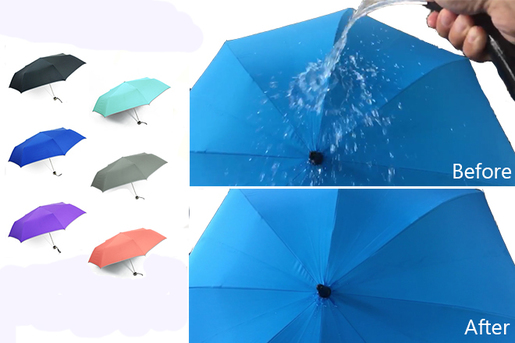
Water Resistance for All Weather:
The functionality of the WPC umbrella goes beyond UV protection. Its water-resistant properties make it a versatile companion, ready to withstand unexpected rain showers. The high-quality canopy material repels water, keeping you dry and comfortable even in light to moderate rain. You no longer have to worry about sudden weather changes when you have the WPC umbrella by your side.
防水功能,應對各種天氣
WPC雨傘的功能不僅限於UV防護。其防水特性使其成為多用途的伴侶,隨時準備應對突如其來的降雨。高品質的遮陽篷材料能夠拒水,讓您在輕度到中度的降雨中保持乾燥和舒適。擁有WPC雨傘,您再也不必擔心突如其來的天氣變化。
Lightweight and Portable:
Carrying around a heavy umbrella can quickly become a burden. Thankfully, the WPC umbrella is designed with your convenience in mind. It features a lightweight construction that makes it easy to carry and transport. Whether you're commuting, traveling, or simply out for a walk, the WPC umbrella won't weigh you down. Its compact size ensures it fits easily into bags, backpacks, or briefcases, so you can have it on hand whenever you need it.
輕巧便攜
攜帶一把笨重的雨傘會迅速變得麻煩。幸運的是,WPC雨傘的設計考慮到了您的便利性。它採用輕巧的結構,便於攜帶和運輸。無論您是在通勤、旅行,還是僅僅外出散步,WPC雨傘都不會讓您感到負擔。其緊湊的尺寸確保它能輕鬆放入袋子、背包或公文包中,讓您隨時隨地都能使用。

Anti-Reflective Coating:
The WPC umbrella takes sun protection a step further with its anti-reflective properties. The canopy is coated with a special material that minimizes reflection and glare, reducing eye strain caused by intense sunlight. This feature ensures that your eyes stay comfortable and protected, allowing you to enjoy your outdoor activities without any discomfort.
抗反射塗層
WPC雨傘進一步提升了防曬效果,採用抗反射特性。其遮陽篷塗覆了特殊材料,能夠減少反射和眩光,降低強烈陽光造成的眼睛疲勞。這一特性確保您的眼睛保持舒適和保護,讓您可以享受戶外活動而不感到任何不適。
Style Meets Functionality:
The WPC umbrella combines practicality with style. It comes in a variety of colors, patterns, and designs, allowing you to express your personal taste and match your umbrella to your outfit or mood. Whether you prefer vibrant hues or more subdued tones, there's a WPC umbrella that suits your style perfectly. With its sleek and modern design, it's a fashion-forward accessory that enhances your overall look.
功能與風格的完美結合
WPC雨傘將實用性與風格相結合。它提供多種顏色、圖案和設計,讓您可以表達個人品味,並將雨傘與您的服裝或心情相匹配。無論您喜歡鮮豔的色調還是較為柔和的色彩,都有一款適合您風格的WPC雨傘。憑藉其流線型和現代化的設計,它是一款時尚配件,提升了您的整體造型。

Promoting Your Brand:
As a corporate gift company, offering WPC umbrellas as promotional items presents a unique opportunity to showcase your brand. By customizing the umbrella with your company logo or branding, you create a memorable and practical gift that not only protects recipients but also promotes your business. Whenever your clients or employees use the umbrella, they become walking advertisements for your brand, increasing its visibility and reach.
The WPC umbrella is a remarkable accessory that combines exceptional UV protection, functionality, and style. With its high UV protection rating, water resistance, lightweight design, and anti-reflective properties, it offers a comprehensive solution for outdoor enthusiasts. As a corporate gift, the WPC umbrella not only demonstrates your commitment to the well-being of your recipients but also serves as a powerful branding tool. Embrace the versatility and style of the WPC umbrella, and elevate your sun protection game to new heights.
推廣您的品牌
作為一家企業贈禮公司,提供WPC雨傘作為促銷品為展示您的品牌提供了獨特的機會。通過在雨傘上定制您的公司標誌或品牌,您創造了一份既實用又難忘的禮物,不僅能保護收件人,還能推廣您的業務。每當您的客戶或員工使用這把雨傘時,他們就成為您品牌的行走廣告,增加其可見度和影響力。
WPC雨傘是一款卓越的配件,結合了卓越的UV防護、實用性和風格。憑藉其高紫外線防護等級、防水功能、輕巧設計和抗反射特性,為戶外愛好者提供了全面的解決方案。作為企業贈禮,WPC雨傘不僅顯示出您對收件人福祉的關注,還作為一個強大的品牌工具。擁抱WPC雨傘的多樣性和風格,將您的防曬體驗提升到新高度。

2024-04-26 15:51:11
The Art of Corporate Gifting: Building Relationships through Thoughtful GesturesCorporate gifting has become an essential practice in today's business world. It serves as a powerful tool for building and nurturing relationships with clients, employees, and business partners. Beyond mere material exchange, the art of corporate gifting lies in the ability to create meaningful connections, express gratitude, and leave a lasting impression. In this blog post, we will explore the significance of corporate gifting and discuss the key elements that make it an art form.
1. Understanding the Purpose:
Corporate gifting goes beyond the act of giving presents. It is a strategic approach to express appreciation, strengthen relationships, and enhance brand visibility. Each gift should be carefully selected and customized to align with the recipient's interests, preferences, and the occasion. By understanding the purpose behind the gift, whether it is to reward outstanding performance, celebrate milestones, or show gratitude, you can ensure that your gesture resonates with the recipient.
2. Personalization and Relevance:
The art of corporate gifting lies in personalization. Tailoring the gift to the recipient's individual preferences and needs makes it more memorable and meaningful. Take the time to learn about the recipient's interests, hobbies, and preferences. This knowledge will help you select a gift that is relevant and demonstrates your thoughtfulness. Whether it's a personalized item, a unique experience, or a thoughtful handwritten note, personalization adds a touch of sincerity and shows that you value the relationship.
3. Branding and Identity:
Corporate gifting provides an excellent opportunity to reinforce your brand identity. Consider incorporating your company's logo, colors, or tagline into the gift. This not only creates a lasting impression but also helps promote brand recognition. However, it is important to strike a balance between branding and subtlety, ensuring that the gift remains tasteful and professional.
4. Quality and Durability:
When selecting corporate gifts, prioritize quality and durability. A well-crafted gift reflects the level of care and attention you put into your relationships. Opt for products that are built to last, as they will serve as a constant reminder of your partnership. Investing in high-quality gifts also showcases your commitment to excellence and reinforces your brand's reputation.
5. Timing and Presentation:
Timing is crucial when it comes to corporate gifting. Be mindful of important occasions, such as holidays, anniversaries, or significant milestones. Sending a gift at the right time demonstrates your attentiveness and consideration. Moreover, the way the gift is presented adds to its impact. Pay attention to packaging, including elegant wrapping, personalized notes, or customized messages to create a memorable unboxing experience.
The art of corporate gifting is a delicate blend of thoughtfulness, personalization, and strategic relationship-building. By understanding the purpose, personalizing each gift, incorporating your brand identity, prioritizing quality, and considering timing and presentation, you can create a lasting impression and forge strong connections with your clients, employees, and business partners.
At iGiftU, we understand the importance of corporate gifting and offer a range of carefully curated products that reflect your brand's values and leave a lasting impact. With our expertise in the art of corporate gifting, we are committed to helping you strengthen relationships and foster a sense of appreciation and goodwill within your professional network.
Discover the art of corporate gifting with iGiftU and make every gesture count!
<Contact us to discuss your gifting needs.>

2024-04-05 13:55:30
Improving the daily lives of both guests and staff, by growing plants in the workspace: Guldsmeden HotelsWho:
Guldsmeden Hotels is a nouveau-Bohemian, Danish-owned sustainable boutique hotel group, with properties in Denmark, Norway, Iceland, Germany, France, and Indonesia.
What:
SproutWorld pencils engraved with hotel logo and “Plant me!” message, accompanied by a postcard explaining the pencil’s second life concept to guests.
Why:
We were looking for a solution with as little negative impact as possible. In particular, we were focused on finding a product that would not contribute to our general waste with problematic components.
How:
Pencils are distributed in all guest rooms and are given out to meeting and conference guests.
Sustainability is a key driver at Guldsmeden Hotels, known for their luxurious surroundings, great service, and delicious food.
Founded by Sandra and Marc Weinert in Århus, Denmark in 1999, Guldsmeden Hotels has been working with sustainability since the beginning. Guided by their own sustainable values, the couple have embedded this passion into running the hotel group. It’s something they take great pride in. “It is what drives us to not be afraid to learn new things and evolve our efforts continuously.”
It's clearly been a recipe for success as the nouveau-Bohemian, sustainable boutique hotel group has grown to eight hotels, a rental villa in France, and a luxury resort in Bali. Recently, all Guldsmeden properties switched to using customized SproutWorld pencils in their 900+ rooms, and as part of their meeting and conference packs.
“We were looking for a solution with as little negative impact as possible. In particular, we were focused on finding a product that would not contribute to our general waste with problematic components.” SproutWorld’s second life, zero waste pencils fit the bill and passed the rigorous tests set out in Guldsmeden’s sustainable and ethical purchasing policy.
“The pencils have been well received and put a smile on people’s faces. It also gives us an opportunity to enter into a dialogue with our guests about our choices and decisions [around sustainability], which we always appreciate.”
“Guldsmeden are committed to providing guests with a wonderful stay, and hopefully a few good tips and ideas for a more environmentally sound everyday life.” Being able to contribute in our own small way towards Guldsmeden’s goals and spreading a positive message about sustainability is why we do what we do.
Credit: Sproutworld
The partnership between Guldsmeden Hotels and SproutWorld exemplifies the importance of sustainable choices in the hospitality industry. It showcases how a small change, such as using plantable pencils, can make a meaningful difference and encourage dialogue on sustainability among guests. Initiatives like these demonstrate the power of collaboration and highlight the positive steps that businesses can take towards a greener future.
With pollution and global warming on the rise, companies worldwide have to come up with solutions and effective methods of curbing the ill effects of manufacturing processes, etc. Shifting to RPET products is a great way to go green for the next event, exhibition or staff welcome gift.
IGiftU produces sustainable products, and we believe this is a necessary step to save the Earth from further destruction and damage.
Let's work together To embrace Green for a Green Life!
1
.png)
2024-04-03 18:45:41
What is Premium Corporate Gifting?Premium corporate gifting: the practice of offering high-quality, luxurious, and exclusive gifts to clients, employees, and partners as a gesture of appreciation, goodwill, or as part of a strategic marketing effort. These gifts are carefully selected to reflect the premium nature of the brand and associated with exceptional craftsmanship, superior materials, and unique designs.
Premium corporate gifts go beyond the standard promotional items or generic presents commonly used in corporate gifting. They are intended to make a lasting impression and convey a sense of value, sophistication, and exclusivity. These gifts are often customized or personalized to align with the recipient's preferences and to showcase the brand's identity.
The selection of premium corporate gifts can vary widely, ranging from luxury items such as high-end electronics, designer accessories, fine wines, gourmet food baskets, personalized jewelry, or unique experiences like spa retreats, exclusive event tickets, or travel packages.
The key characteristics of premium corporate gifting include:
High Quality
Premium gifts are crafted with exceptional attention to detail, using top-notch materials and superior craftsmanship. They are designed to exude quality and durability, ensuring they stand the test of time.
Exclusivity
Premium gifts are often limited in availability or unique in design, making them exclusive and sought after. This exclusivity adds to their perceived value and enhances their desirability.
Personalization
Customization is a common feature of premium corporate gifts. Brands can incorporate their logos, branding elements, or tailor the gift to the recipient's preferences, adding a personal touch and making the gift more meaningful.
Brand Representation
Premium corporate gifts serve as powerful brand ambassadors. They reflect the values, identity, and reputation of the brand, helping to reinforce the brand's image and leaving a positive impression on the recipient.
Relationship Building
Premium gifts are given with the intention of strengthening relationships. They communicate the importance placed on the recipient's collaboration, loyalty, or partnership, fostering goodwill and creating a sense of reciprocity.
Premium corporate gifting enhancing brand perception, differentiating from competitors, strengthening relationships, and creating memorable experiences. These gifts are designed to leave a lasting impression and to evoke positive emotions, leading to increased customer loyalty, employee satisfaction, and business opportunities.

2024-04-03 18:05:43
Recycled CottonRecycled cotton is a textile material produced from pre- or post-consumer cotton waste, such as discarded clothing, fabric scraps, or industrial cotton waste. Instead of sending these materials to landfills, they undergo a recycling process to create new yarns and fabrics. By utilizing existing cotton resources, recycled cotton reduces the need for new cotton production, conserves water and energy, and minimizes waste in the fashion and textile industries.

Recycled PC is gaining popularity as a more environmentally friendly alternative to virgin PC:
It reduces the need for extracting and processing new resources from the earth, which is harmful to the environment. Secondly, recycling polycarbonate helps reduce greenhouse gas emissions, which contribute to climate change. Thirdly, it promotes the idea of reusing materials instead of constantly making new ones, which is better for our planet.
Impact: Recycled Polycarbonate saves about 52% of GHG-emissions, compared to the products manufactured from virgin Polycarbonate.
Here are a few products that are made using RPET:
Tote Bag
T shirt
Travel Bag

2024-04-03 17:18:03
The Growing Trend of Plantable Pencils: Writing with Sustainability in Mindln an era where environmental conservation and sustainability are gaining increasing importance, innovative solutions are emerging to address everyday challenges. One such solution is the plantable pencil, a unique writing instrument that not only serves its purpose but also offers the opportunity to grow plants and contribute to a greener world. In this article, we will explore the concept of plantable pencils, their benefits, and how they promote sustainability.
What are Plantable Pencils?
Plantable pencils, also known as seed pencils or eco-pencils, are writing instruments that contain a small seed capsule at the end instead of an eraser. These pencils are typically made from sustainable materials such as recycled paper or wood and are designed to be biodegradable. When the pencil becomes too short to write with, instead of throwing it away, it can be planted in soil, and with proper care, it can grow into a plant.
Plantable pencils offer a distinctive and eco-friendly option that can enhance the corporate gifting experience.
They are Unique and Memorable.
Plantable pencils provide a unique and memorable gifting experience for customers. The concept of a pencil that can be planted and transformed into a plant is innovative and unexpected. This uniqueness sets the gift apart from conventional corporate gifts and leaves a lasting impression, reinforcing the company's brand image and values in the customer's mind.
They create an emotional connection with customers.
Plantable pencils evoke a sense of growth, renewal, and sustainability. By offering a gift that symbolizes these values, companies can connect with customers on a deeper level, fostering a positive emotional association with the brand. Customers are more likely to remember and appreciate a gift that embodies meaningful values.
They provide an ongoing opportunity for brand visibility and recall.
As the pencil is used or displayed, it serves as a constant reminder of the company and its commitment to sustainability. This increased brand exposure can lead to improved brand recall and customer loyalty, as customers associate the positive experience of receiving the gift with the company's products or services.

2024-04-03 16:01:06
The Importance of Corporate Gifts: Strengthening Relationships and Building Brand LoyaltyIn the world of business, building strong relationships and fostering loyalty are key components to long-term success. One effective way to achieve this is through the strategic use of corporate gifts. Corporate gifting has become an integral part of business culture, as companies recognize the importance of showing appreciation to clients, employees, and partners. Now, we will explore why corporate gifts are so important and how they can contribute to relationship-building and brand loyalty.
Expressing Appreciation and Gratitude:
Corporate gifts serve as tangible expressions of appreciation and gratitude. By acknowledging the contributions and support of clients, employees, and partners, companies demonstrate that their relationships are valued. This act of recognition helps to strengthen bonds and foster a sense of loyalty among recipients. When individuals feel appreciated, they are more likely to maintain a positive association with the company and continue their engagement.
Strengthening Relationships:
Gift-giving creates opportunities to connect on a personal level. It allows businesses to show that they understand and care about the needs and interests of their recipients. Thoughtful and well-chosen gifts demonstrate that a company has taken the time to consider the individual preferences and tastes of the recipient. By tailoring gifts to the recipients' interests or hobbies, businesses can establish closer connections and build stronger relationships.
Enhancing Brand Image:
Corporate gifts can serve as powerful branding tools. When a company presents high-quality, well-designed gifts, it reflects positively on their brand image. The gift itself becomes a physical representation of the company's values and commitment to excellence. By associating their brand with quality and thoughtfulness, businesses can enhance their reputation and differentiate themselves from competitors.
Increasing Brand Visibility:
Corporate gifts can provide a means to increase brand visibility and exposure. Branded gifts, such as custom-made merchandise or promotional items, serve as constant reminders of the company and its offerings. When recipients use or display these items, they inadvertently become brand ambassadors, spreading awareness to a wider audience. This increased visibility can lead to new opportunities, referrals, and potential partnerships.
Retaining and Motivating Employees:
Corporate gifts play a vital role in employee retention and motivation. Recognizing employees' hard work and achievements through thoughtful gifts creates a sense of value and appreciation. This, in turn, boosts morale, job satisfaction, and motivation. Employees who feel valued are more likely to remain loyal to the company and go the extra mile in their work. Moreover, corporate gifts can also be used as incentives for reaching targets or milestones, further motivating employees and driving productivity.
Corporate gifts are not merely tokens of appreciation; they are powerful tools for relationship-building, brand loyalty, and employee satisfaction. By expressing gratitude, strengthening relationships, enhancing brand image, increasing brand visibility, and motivating employees, businesses can reap substantial benefits. The act of giving corporate gifts demonstrates that a company values its clients, employees, and partners, fostering a positive and lasting impression. In an increasingly competitive business landscape, the importance of corporate gifts cannot be overstated. It is an investment that yields long-term dividends, helping businesses thrive and grow.

2024-04-02 18:51:14
What is RPET?Before we delve into RPET, it is important to know what PET or polyethylene tetraphyte is. This is a specific type of polymer used to make the various plastic bottles and other packaging that you might use daily. PET is durable, non-toxic, lightweight, and the top choice for the food and drinks industry. However, PET takes several years to break down, which is harmful to landfills.
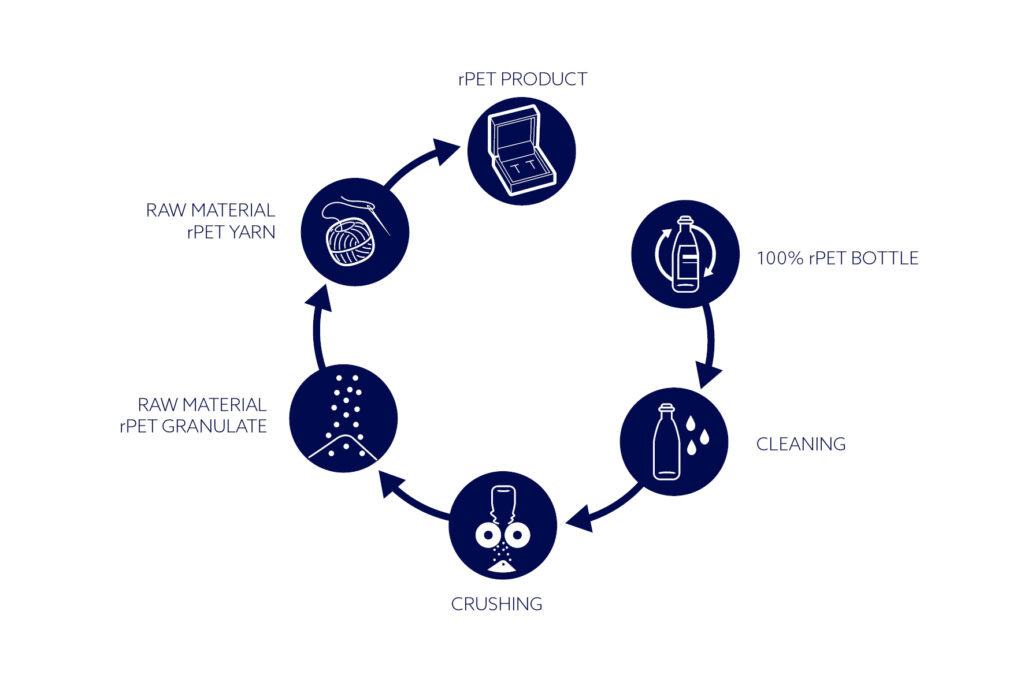
This is where RPET or Recycled PET enters the picture. PET bottles are chopped into tiny flakes by RPET and are recycled to make anything from bottles to even sweaters. It reduces energy usage by 50%, which is good news for the environment and the planet. Many companies, including ours, manufacture RPET products, and we believe this is a necessary step to save the Earth from further destruction and damage.
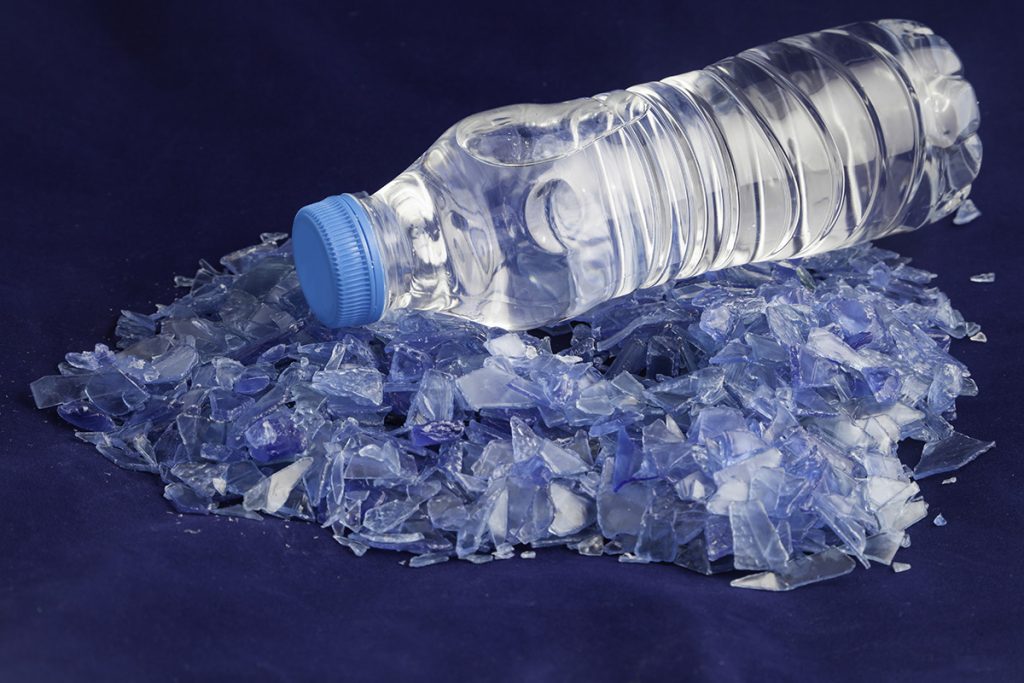
Here are a few products that are made using RPET:
- LUMA RPET Revolution Transparent Ballpoint Pen
This is one of our best retractable ballpoint pens that provide immense comfort while writing. It is made of recycled PET that originally comes from consumer water bottles and soda bottles. Available in several colors, this environment-friendly pen is truly revolutionary in terms of its style, build, and function.
- XD Design Impact RPET Laptop Sleeve

This 15.6” laptop sleeve is all about sustainability as it uses genuine recycled fabric materials and has a water reduction impact. Blockchain technology and physical tracer is a great way to save water and use environment-friendly materials. When you use this laptop sleeve, you protect the Earth from damage caused by 10 liters of water and 16 plastic bottles.
- XD Design Impact RPET Toiletry Bag

The XD Design toiletry bag is a combination of style, simplicity, and sustainability. It is made of a 300D RPET and AWARE tracer, which ensures water reduction. Use a toiletry bag that can not only hold all your goods in a compact manner but also help you do your bit as an environment-conscious citizen of the world. Using this toiletry bag will reuse 1.4 500 ml PET bottles and save 0.84 liters of water.
- XD Design Impact Recycled Cotton Cap

This super stylish cap will steal the show if you pair it with your casuals on a day out. The best part about the cap? While there are several features like the curved visor, velcro closure, embroidered eyelets for ventilation, etc., the winner is the recycled material it is made of. This RPET cotton cap is 100% recycled and saves a lot of water during its manufacture.
- 780 ml RPET Sports Water Bottle

The last product on the list is this 780 ml sports water which comes with a silicone handle. Made of 100% recycled PET material, the bottle can be used for running, biking, cycling, doing yoga, or even walking. It is easy to carry around since it’s lightweight and compact. Use this environment-friendly bottle to keep yourself hydrated at all times.
The planet is headed for some bad times, and we are already a witness to this today. With pollution and global warming on the rise, companies across the world have to come up with solutions and effective methods of curbing the ill effects of manufacturing processes, etc. Shifting to RPET products is a great way to go green for the next event.

2021-11-12 16:25:31
Utilizing Eco-Friendly Gifts at Corporate Events - Environmental, Social, and Corporate GovernanceUtilizing business funds to provide gifts at corporate events is a great way to show appreciation for employees, partners, and others attending your event. Purchasing eco-friendly gifts is a great way to sustainably allocate extra funds and uphold social responsibility while enhancing brand image. Businesses both big and small making sustainable choices to help the environment is a huge step in saving the environment and advocating for change.
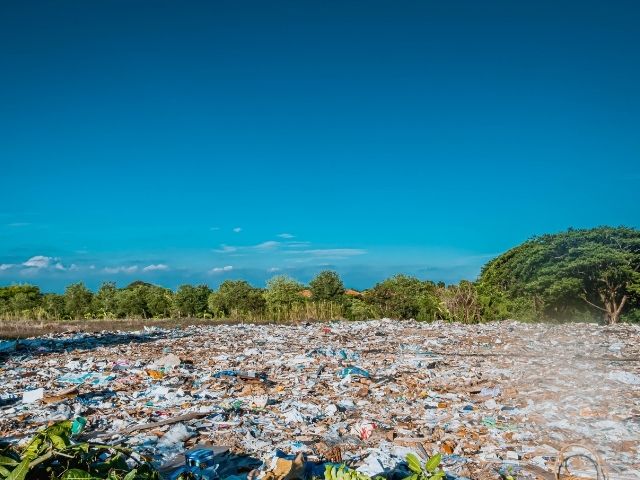
The Reality of the World Today
According to the Environmental Protection Agency, humans have consumed more resources in the past fifty years than ever before in history (U.S. EPA, 2009). We live in a culture of constant consumption and instant gratification, resulting in products that are manufactured cheaply with no environmental factors considered. In fact, in the ten years between 1990 and 2000, Americans wasted enough cans to manufacture enough aircraft to completely reproduce the entire world's commercial air fleet 25 times (Container Recycling Institute, 2002). The keyword here is "reproduce". Though we consume a lot, a lot of the materials and products that we use can be used to reproduce other items. Their use can be extended, and these products can be turned into new things. What if we repurposed our materials instead of adding to the mass amount of trash worldwide? Instead of creating more waste, what if we were reusing things over and over again? Can you imagine the impact?
If we coupled recycling with the production of biodegradable products and the elimination of single-use plastics, we would save our planet and reverse the mass amounts of damage that we've done. Unfortunately, this isn't something that individuals can do on their own. Businesses and corporations are huge world leaders in pollution and waste. From the single-use cups used at the water stations in your office to the mass amount of paper that gets thrown in the trash bin, companies produce a lot of waste. Corporate events are a huge place for single-use products and waste due to pamphlets, cheap gifts, and other things that are just going to end up in the garbage and landfill. What can be done to make a change?

Why You Should Consider Eco-Friendly Products for Your Businesses’ Next Conference
A small step that can be taken to start the journey of being eco-friendly is to purchase eco-friendly products as gifts for your businesses' next conference or corporate event. We've all attended events that hand out goody bags filled with whistles, pens, and other heavily branded products that will never be used. What if these products were eco-friendly instead? What if the biggest businesses in the world took it upon themselves to only buy sustainable products for corporate events?

Eco-Friendly Brand Image
Being environmentally friendly is a fundamentally sound choice for any individual, but what about for companies? Though you may agree with sustainable choices and recycling materials personally, it’s important to understand how implementing these priorities into a business model helps the business to succeed.
Today, there are more sustainable and eco-friendly products than ever before. Single-use products are now multi-use, many electronics are biodegradable, and the world is scrambling like never before to implement environmentally friendly changes to help reverse the damage. Within this flight to sustainability, there are consumers. These consumers are looking for products and companies that support the missions that they find important.
Spending company money on environmentally friendly gift options is a great way to practice what you preach and reinforce priorities within your business. Being eco-friendly is essential to the well-being of the planet, but it is also essential to business stability. As the fight to become more sustainable continues, companies that do not conform are left behind. Adopting eco-friendly changes on your own is a great way to enhance your brand image and encourage consumers and partners to do business with you.

Eco-Friendly Gift Options
Finding eco-friendly corporate gifts may seem like a difficult task, but there has never been a better time in history than today to be eco-friendly. Sustainable products may take a bit more research and planning time, but they are well worth the investment.
Anything that you are looking to buy for your event as a regular product can be found as an eco-friendly product. Customized gifts can be packaged in no waste materials and produced using only recyclables. Instead of using a plastic gift bag, you can opt for a recyclable paper bag or a bag that is made out of recycled materials. Whatever the object is, there is another object out there that is its eco-friendly twin.
Some examples of creative eco-friendly gift ideas may include things like:
- Reusable sandwich bags or cling wrap
- Solar-powered phone chargers
- Stainless steel or paper straws
- Reusable grocery bags
- Reusable water bottles
- Natural beauty products
- Jewelry made from recyclables
And many more!
The possibilities are truly endless when it comes to eco-friendly gifts and the available options.

Corporate Social Responsibility to the Environment
It is every corporation, business, and individual's responsibility to do what they can to reduce waste and try to reverse the damage that has been done to the environment. Purchasing eco-friendly gifts for your next corporate conference or event is a great step in the right direction to making these changes throughout the company and encouraging corporate social responsibility.
Purchasing 1,000 compostable cups instead of 1,000 plastic cups doesn’t seem like a huge change until you realize that you have four conferences a year and you’ve been in business for 20 years. How much space would 80,000 cups take up in a landfill? Though these changes may seem small, they add up and make a huge impact.
Increasing social responsibility and encouraging environmental, social, and corporate governance throughout your company is a necessary obligation. Eco-friendly gifts are a fun way to give back to those who have helped you, while also giving back to the environment.

2021-06-09 19:06:28
禮品訂制推薦哪些類別的禮品現今無論是走親訪友還是出席某些慶典活動都會派送形色各異的禮品,訂制特色禮品也因此快速成為新的發展時尚。這也促使眾多網友不斷在線刷新有關禮品訂制哪家口碑好等資訊,現在就訂制禮品推薦哪些類別的禮品作簡要闡述:
1.適宜訂制加深印像的小禮品
現今許多商務場合或者培訓機構為了加深對活動的印像,故而在活動結束後都會送上特制的小禮品。比如印有活動名稱的水杯、印有商務會議名稱的鋼筆以及印有特殊文字的商務筆等,這些禮品既可以紀念主人參加過這樣的會議或者活動。
2.適宜訂制易於攜帶的隨身型小禮品
訂制禮品的迅猛發展使得某些商務活動能夠以新鮮的面貌呈現在人們面前。而訂制易於攜帶的隨身型小禮品更是許多活動管理者的愛好,像訂制廣告筆、廣告表以及隨身U盤等,這些訂制禮品既小巧又特別實用,無論是何種場合贈送這樣一種小禮品都是值得歡欣雀躍的。
3. 適宜訂制現代科技型企業小禮品
現今越來越多的企業傾向於訂制現代科技型企業小禮品。比如電子萬年歷、電子保健產品以、MP3以及PDA等現代科技型產品,這些產品擁有較強的技術型與實用型,企業在年終尾牙或頒獎活動中發派出此類現代科技型企業小禮品是非常合適的。
訂制禮品的高潮迭起說明了它的市場需求量處於急速上漲趨勢,這也促使越來越多的企業不斷在線刷新禮品訂制哪家可信賴。而據某些分享反饋表明禮品訂制除了適宜訂制加深印像的小禮品,還特別適宜訂制易於攜帶的隨身型小禮品以及適宜訂制現代科技型企業小禮品。

2021-06-09 17:26:45
創新的環保可種植禮品!可讓客戶對您的品牌更印象深刻!近年全球不少企業已開始著重和提倡環保工作,除了為社會為地球出一分力,亦能大大提升企業的環保形象,作為一個有社會責任的企業,確實是可以有效地起了一個帶頭的作用。
因此,近年已有不少企業選擇禮品時傾向選用可重用或可分解產品,Sprout Pencil 丹麥環保可種植鉛筆更成為熱門之選。丹麥推出了一支可以種植植物的鉛筆,Sprout pencil,它是100%可被生物降解和無毒。想棄置鉛筆時,可以倒插於泥土中,過一星期後便長出香草、蔬菜、花朵等植物,可以親手種植食物,又可以支持環保,最重要的是可以提升環保意識,種出一個未來!
Sprout pencil是可種植的鉛筆,當鉛筆變得太短或接近用完時,可以把筆尾直接插在泥土中,裏面有種籽,可以種出車厘茄、芫荽、芡歐鼠尾草(奇亞籽)、勿忘我、羅勒、康乃馨、雛菊、向日葵等植物,延續鉛筆的生命。這些種籽容易生長,當中車厘茄不足10天便會發芽,帶來種植的樂趣。
為了可持續發展,這支鉛筆是100%可生物降解和無毒,採用天然的黏土、石墨、PEFC/FSC認可木材製成。
很多人都喜歡在辦公室放置一個小小盆栽,非常適合企業送禮,又或者在家與小朋友一起享受種植樂,教育小朋友環保的重要性,一舉兩得!
也有很多活動用途適用於不同企業:
1. 活動推廣(積分換領/會員優惠等等)
2. 新產品/服務推出
3. 公司週年禮品
4. VIP禮物
5. 員工禮物
現時可種植鉛筆在外國已經很盛行,亦慢慢流入亞洲市場,會是一個很創新的環保禮品!
更可讓客戶對您的品牌印象深刻呢!

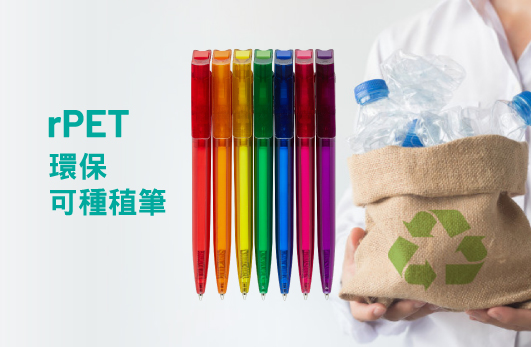
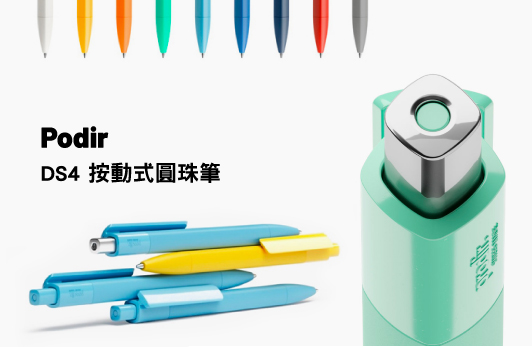

.jpg)
.jpg)
.jpg)
.jpg)
.jpg)
.jpg)







 Sign up Facebook
Sign up Facebook
 Sign up Google
Sign up Google
